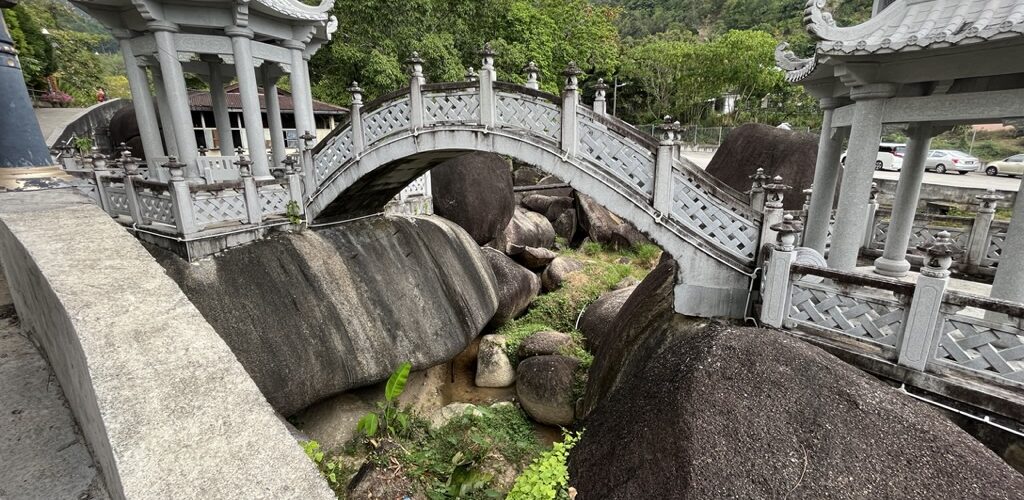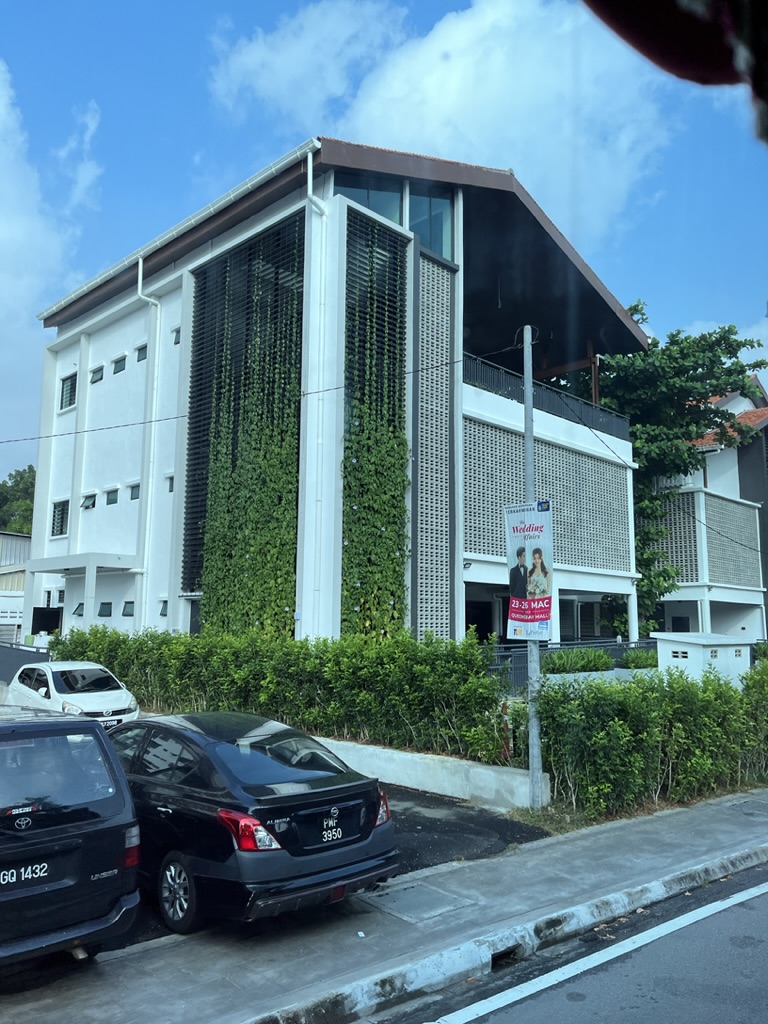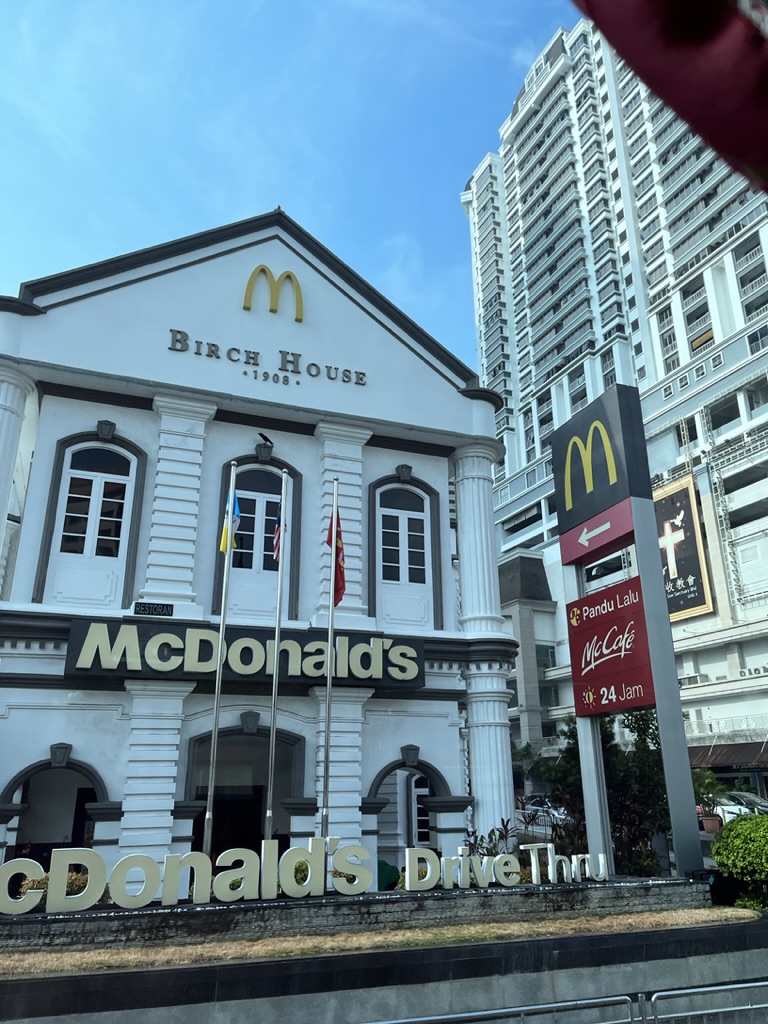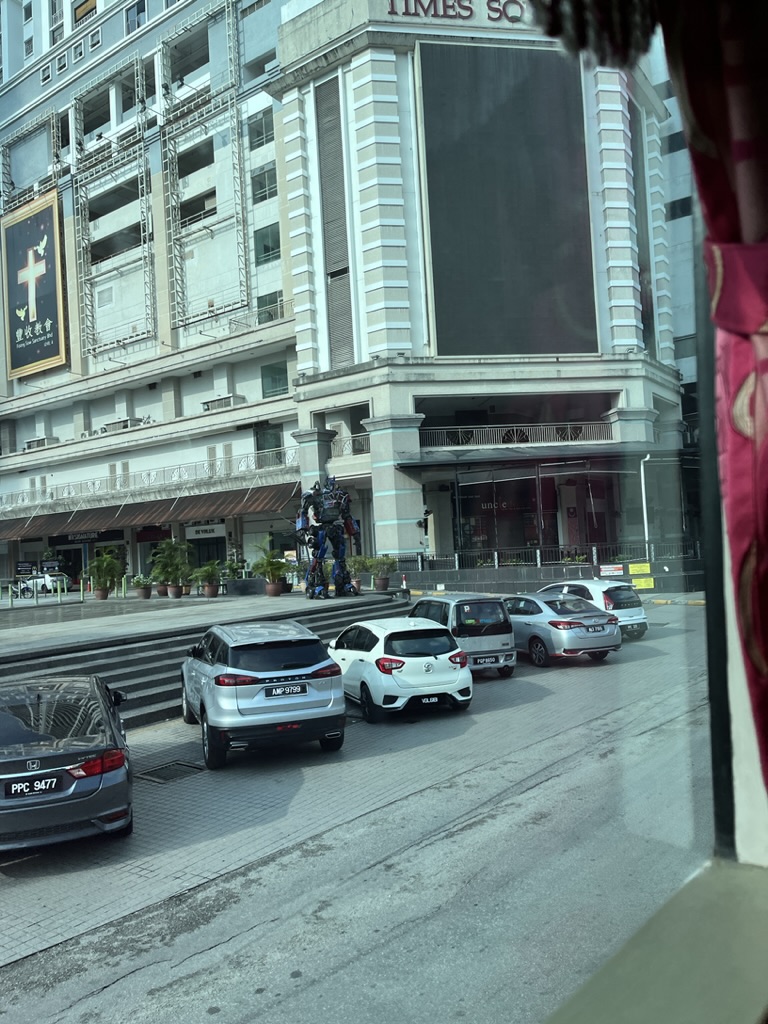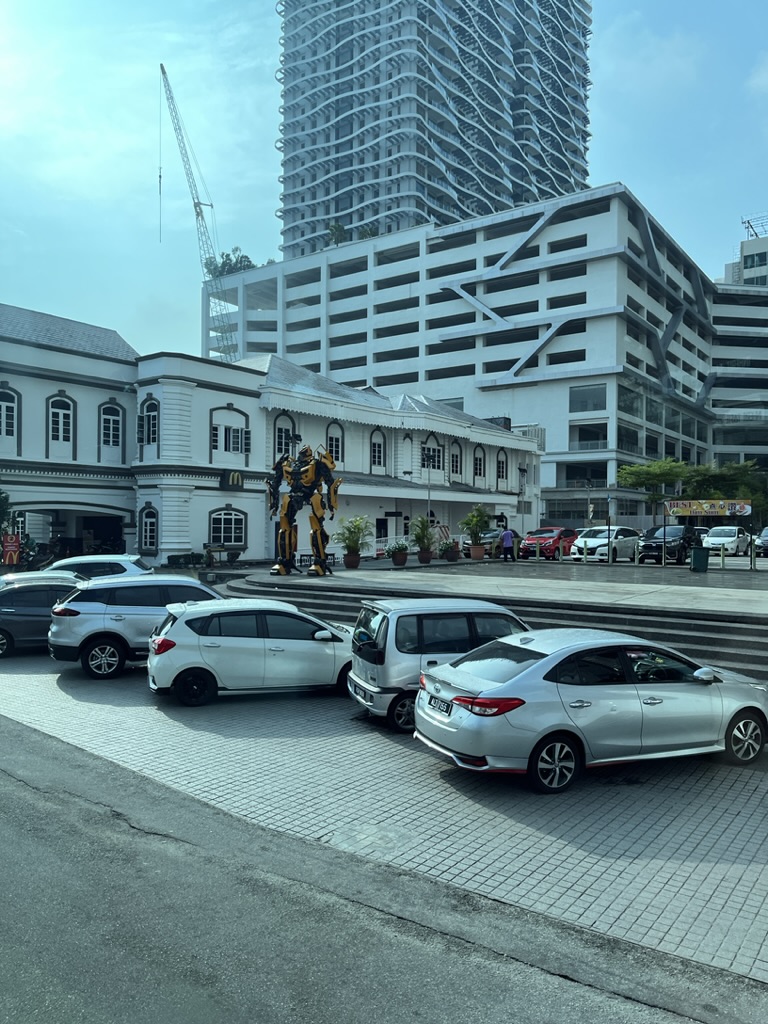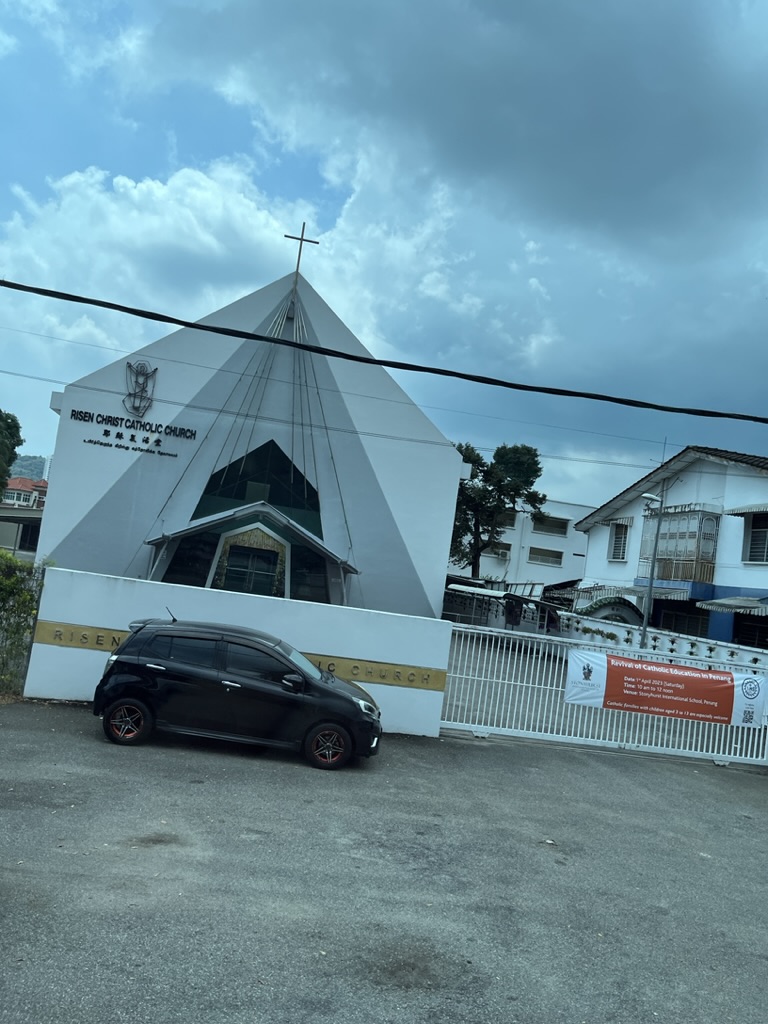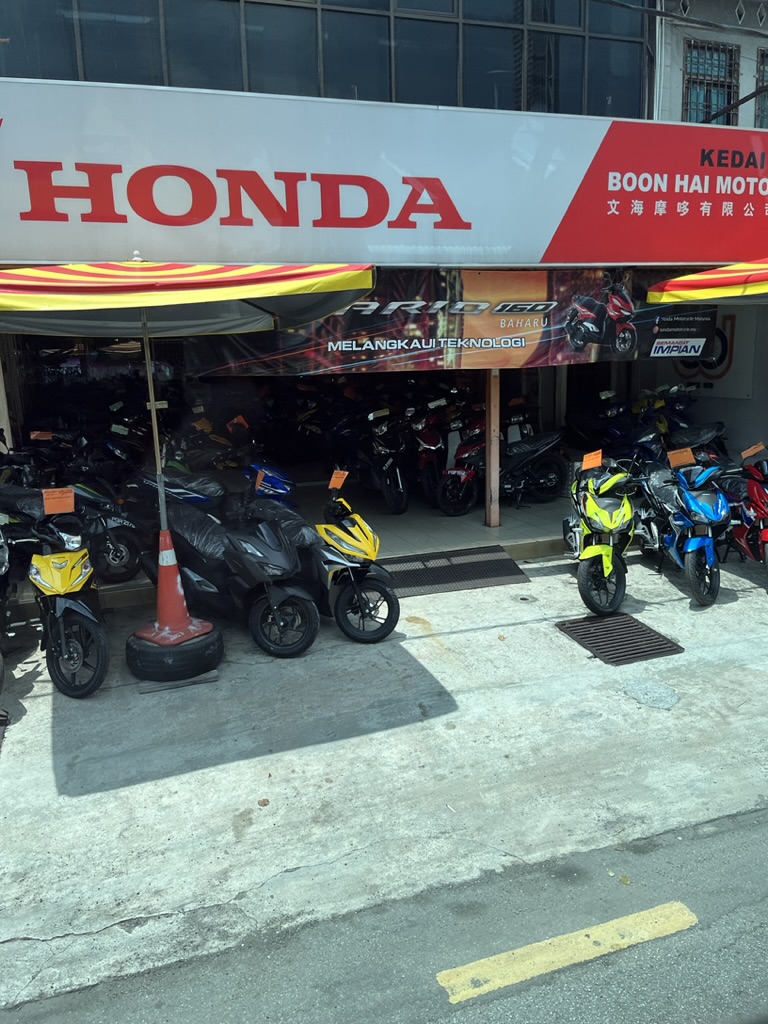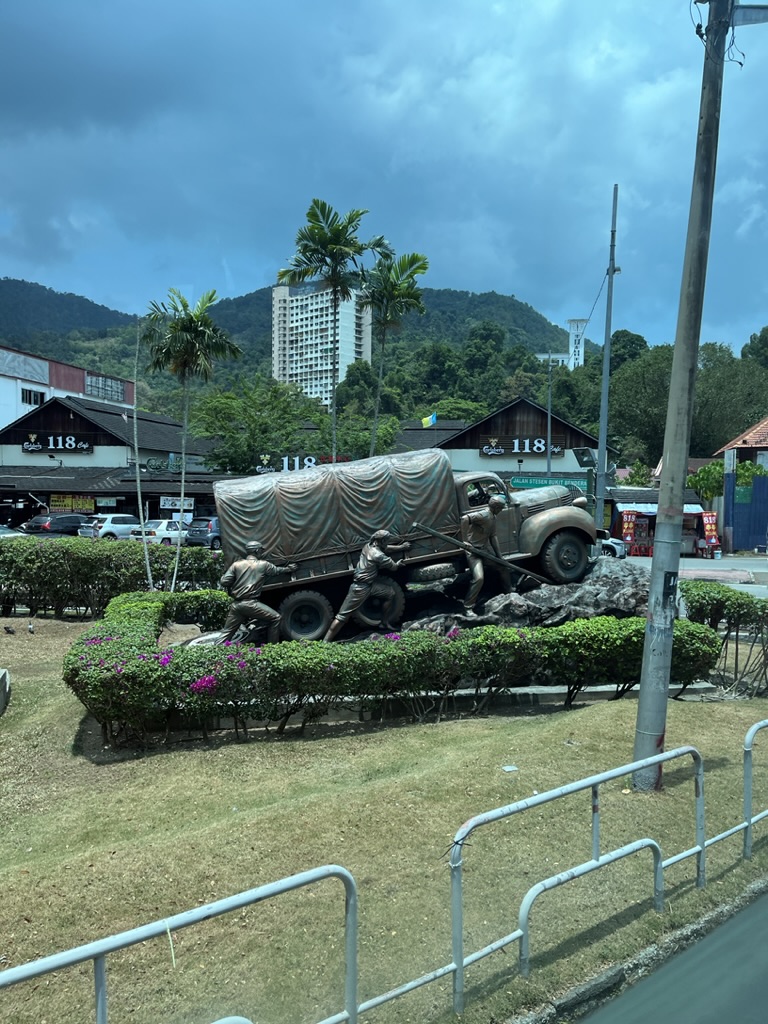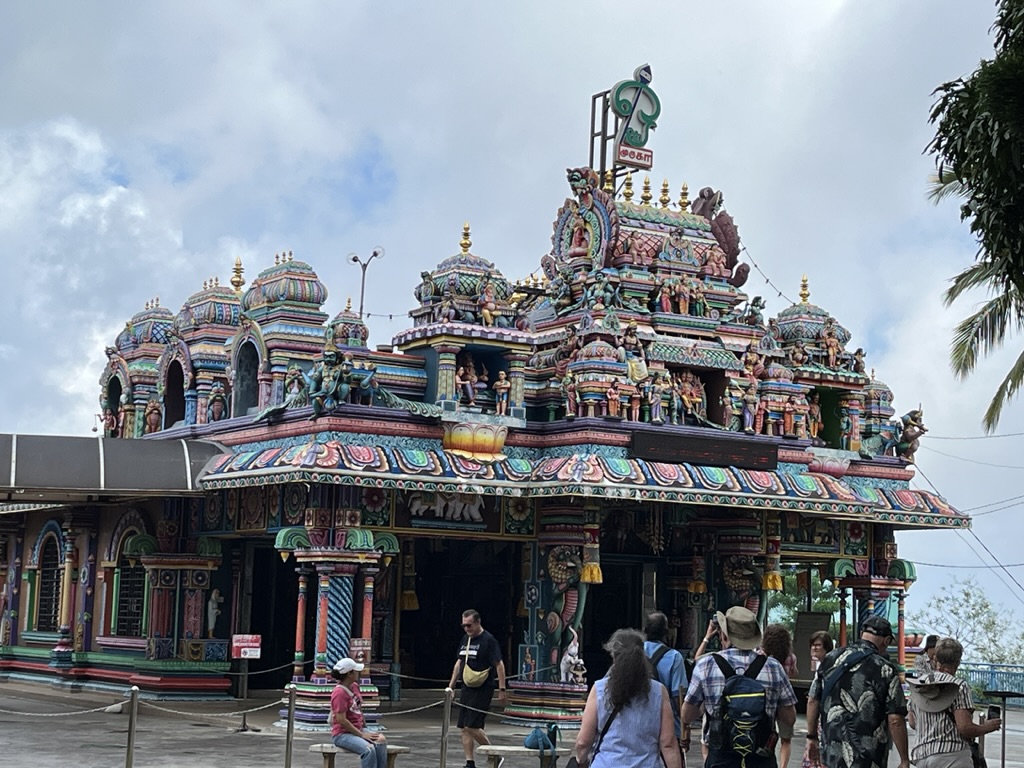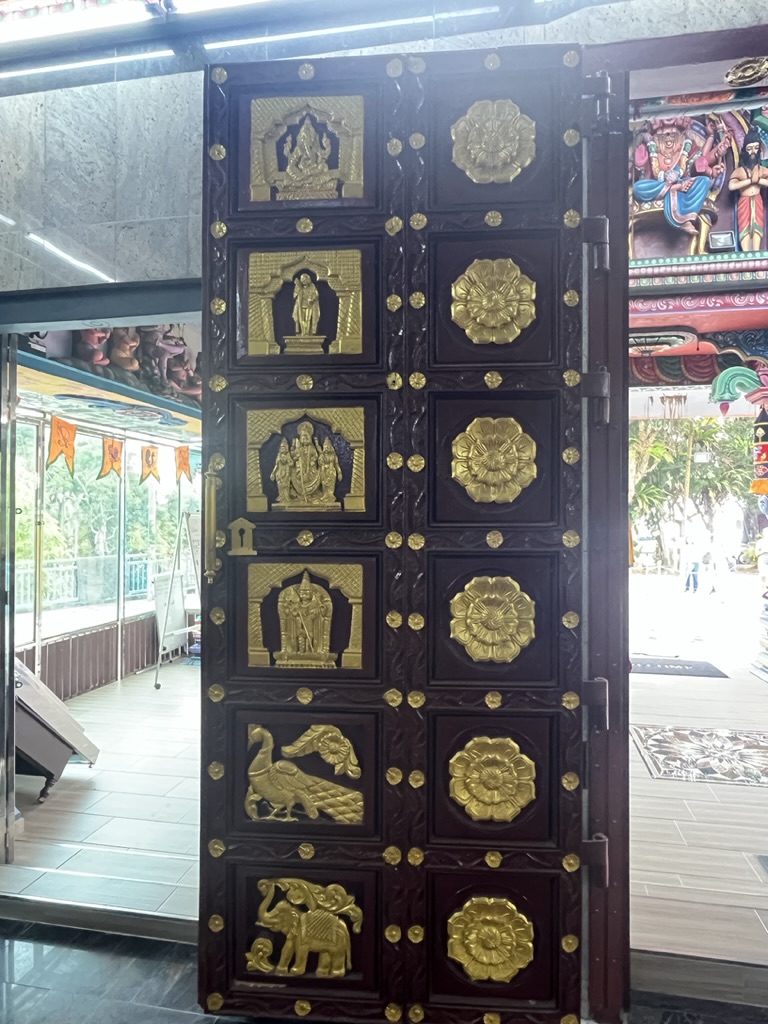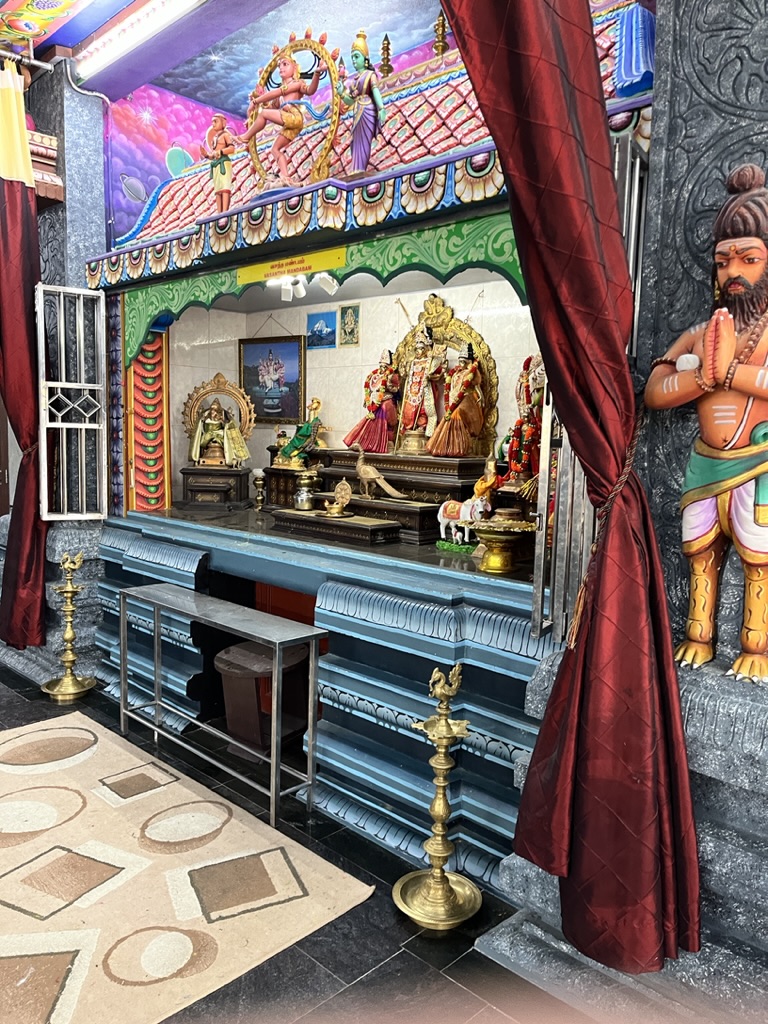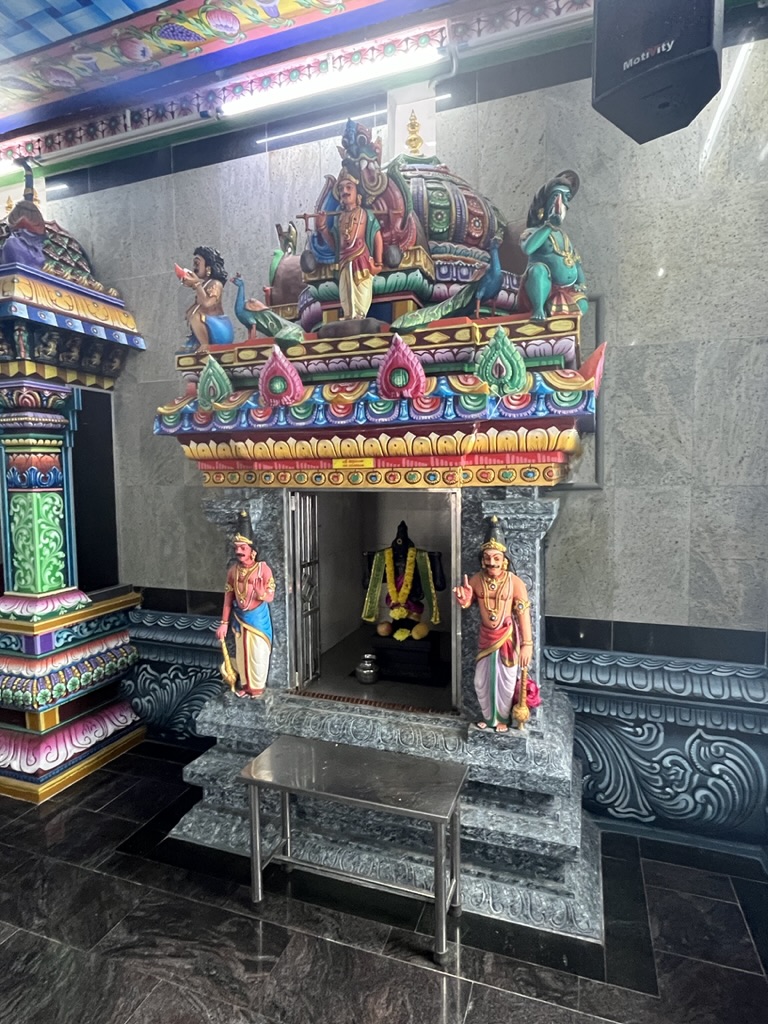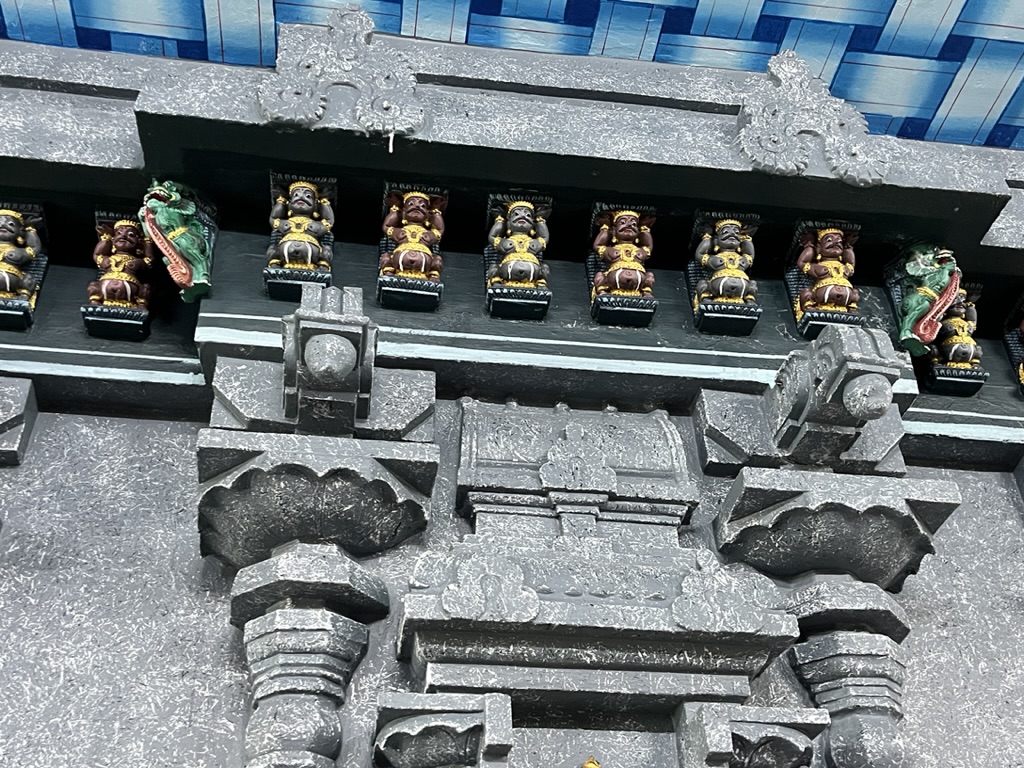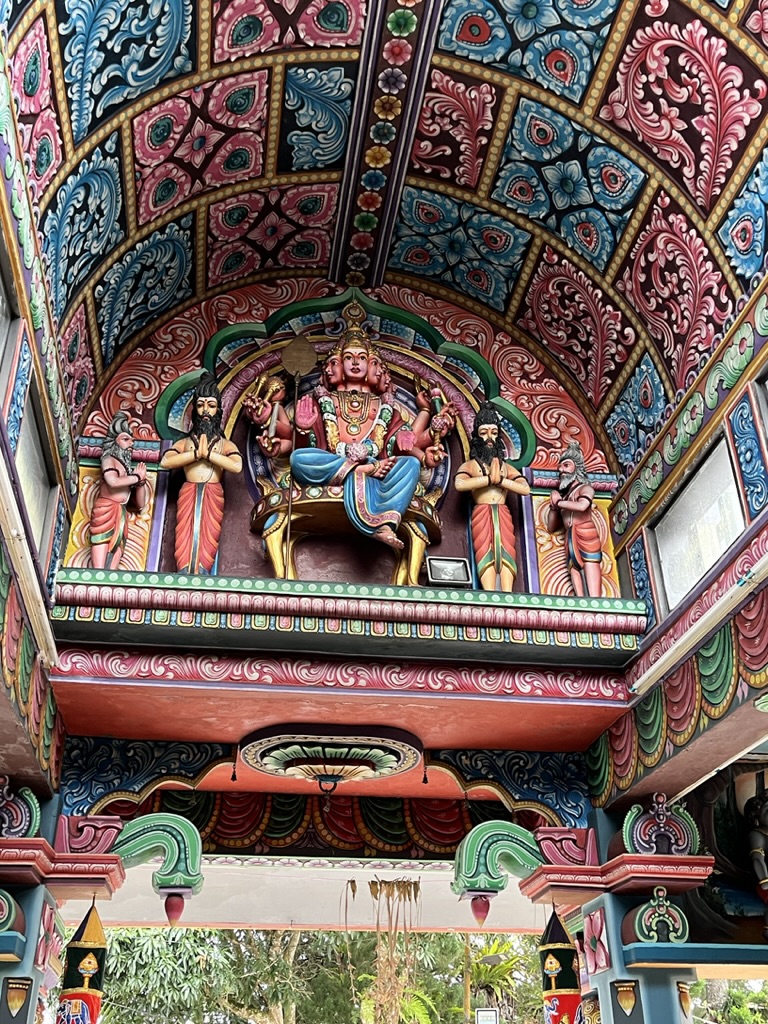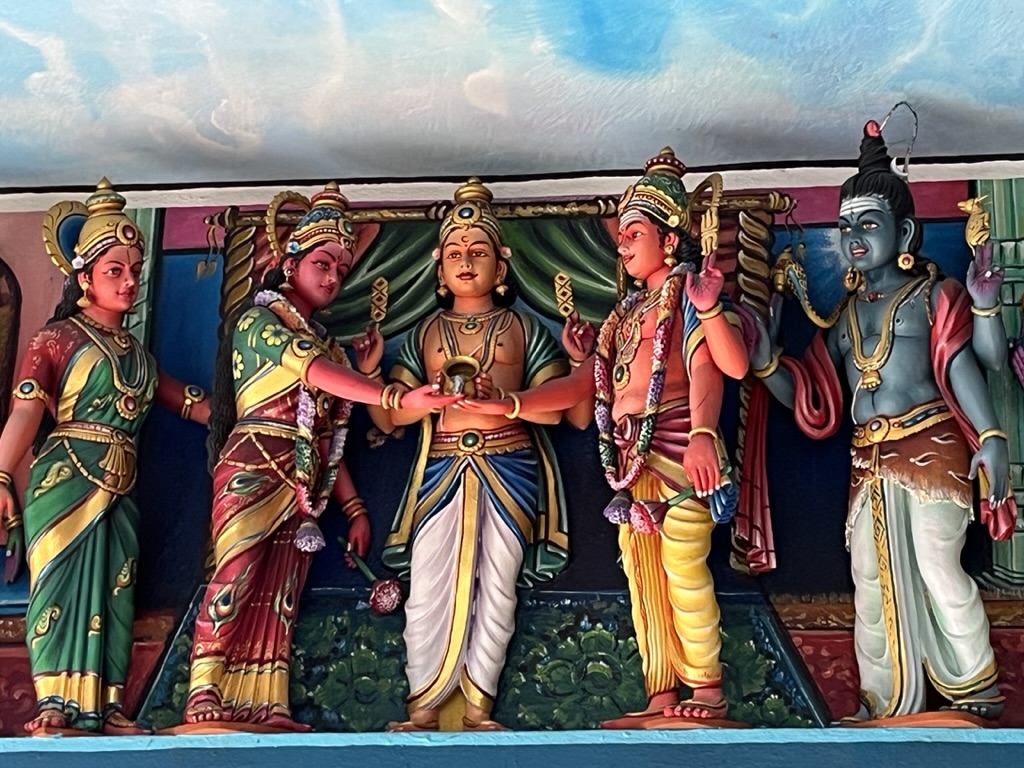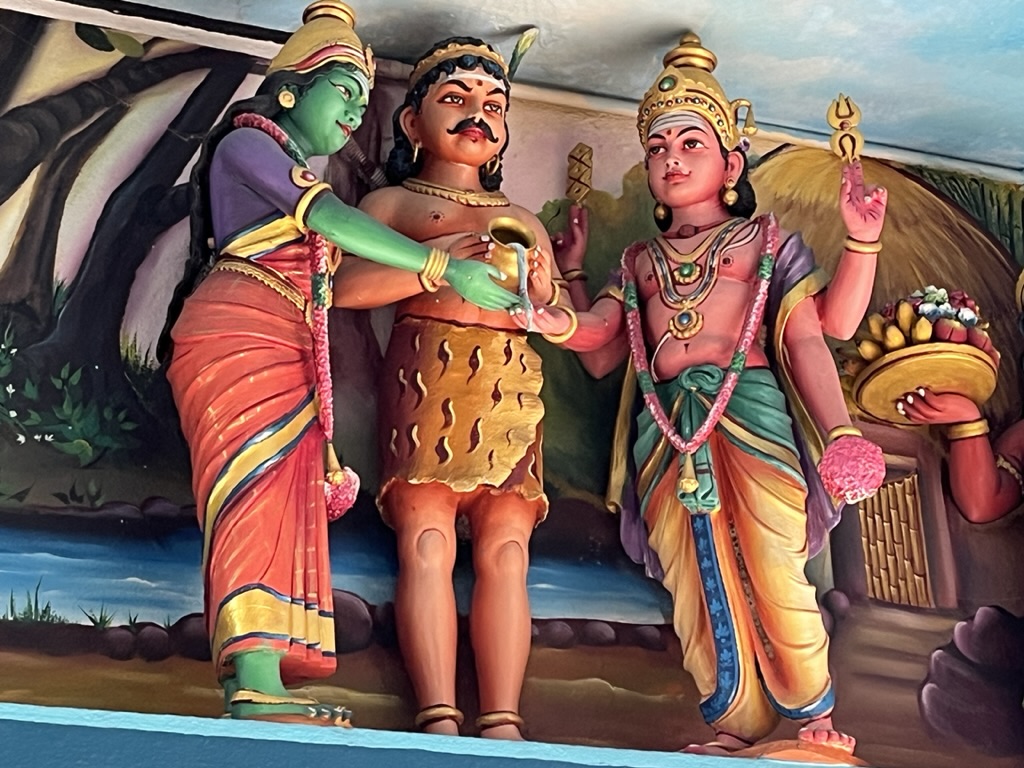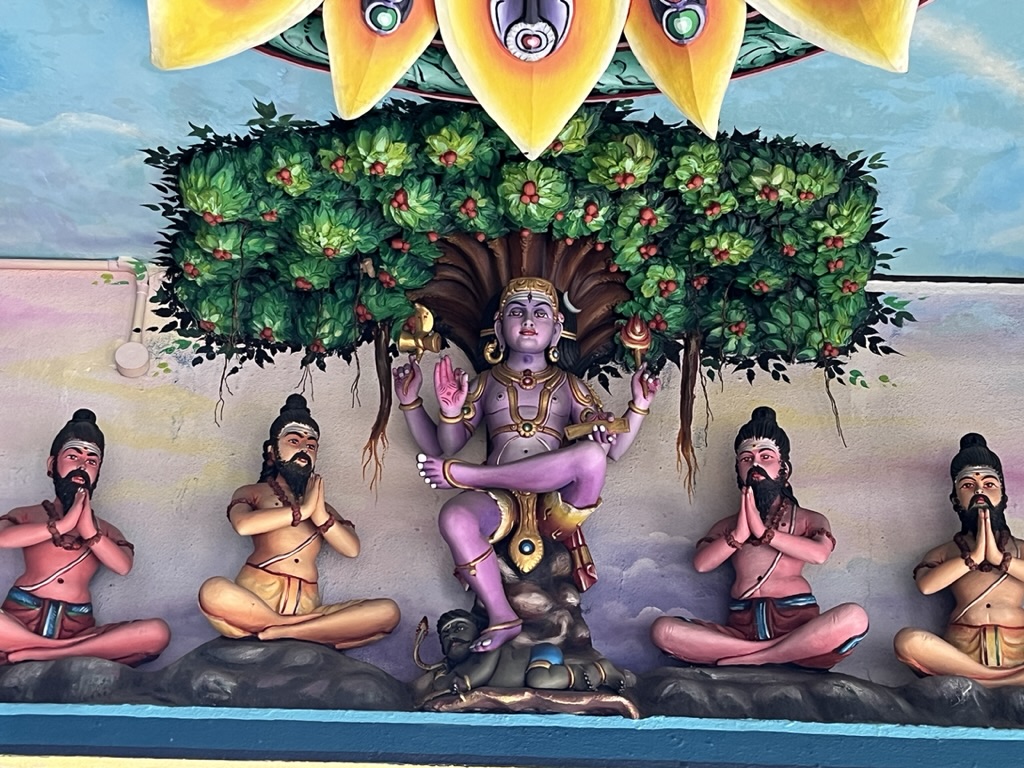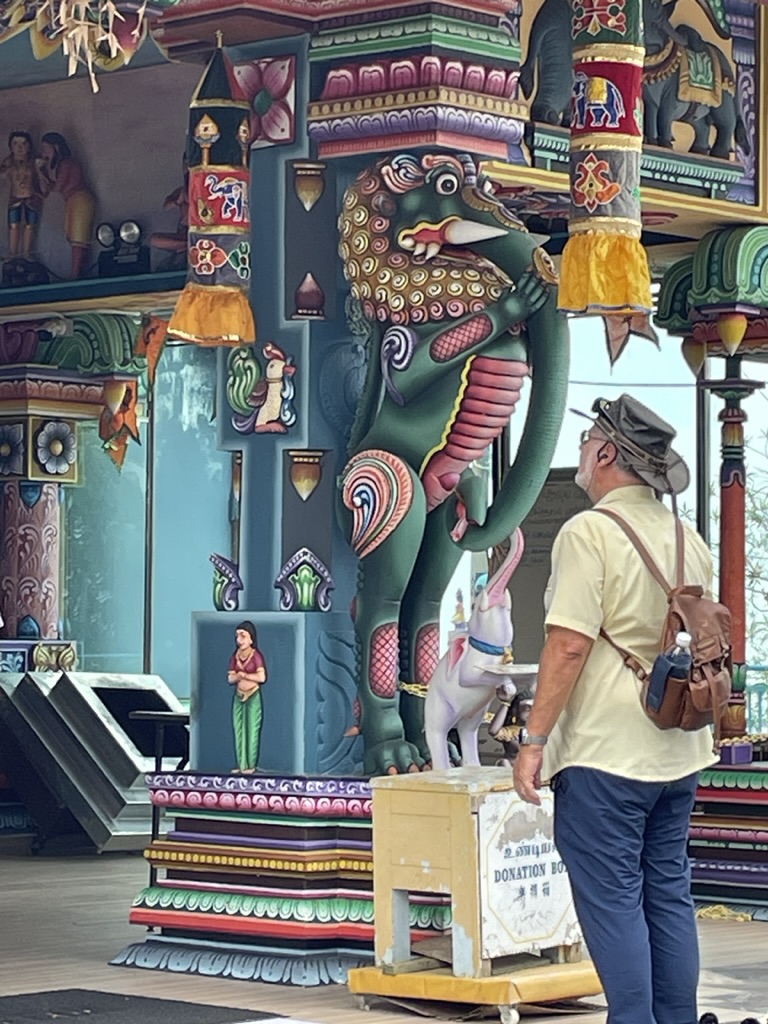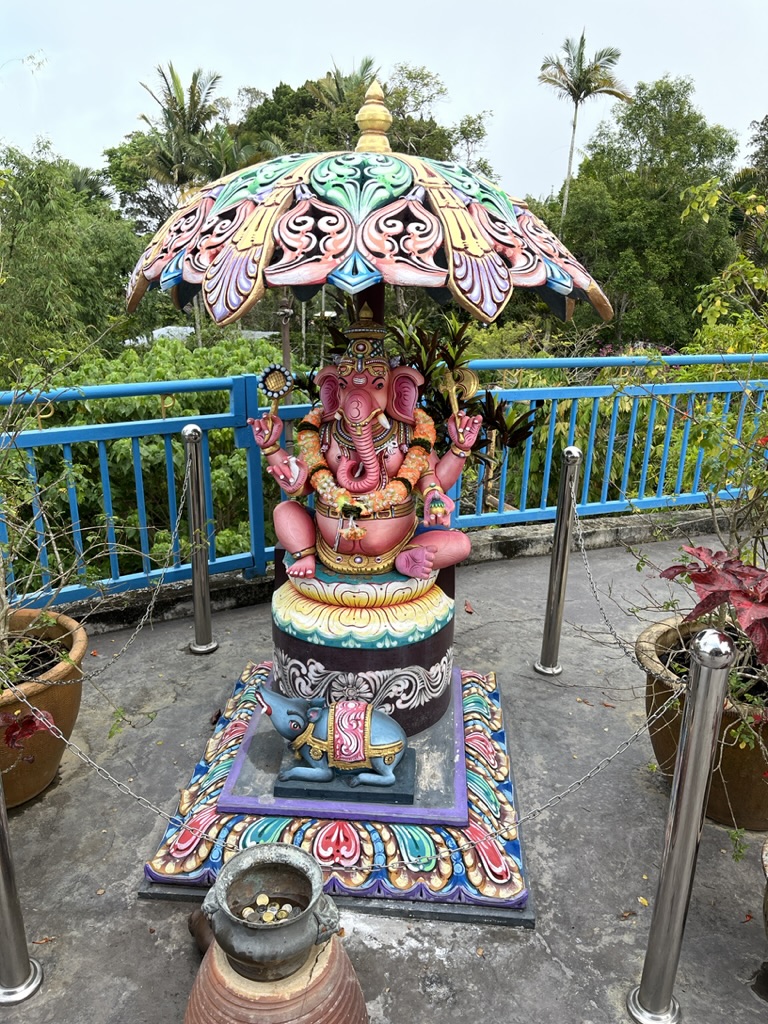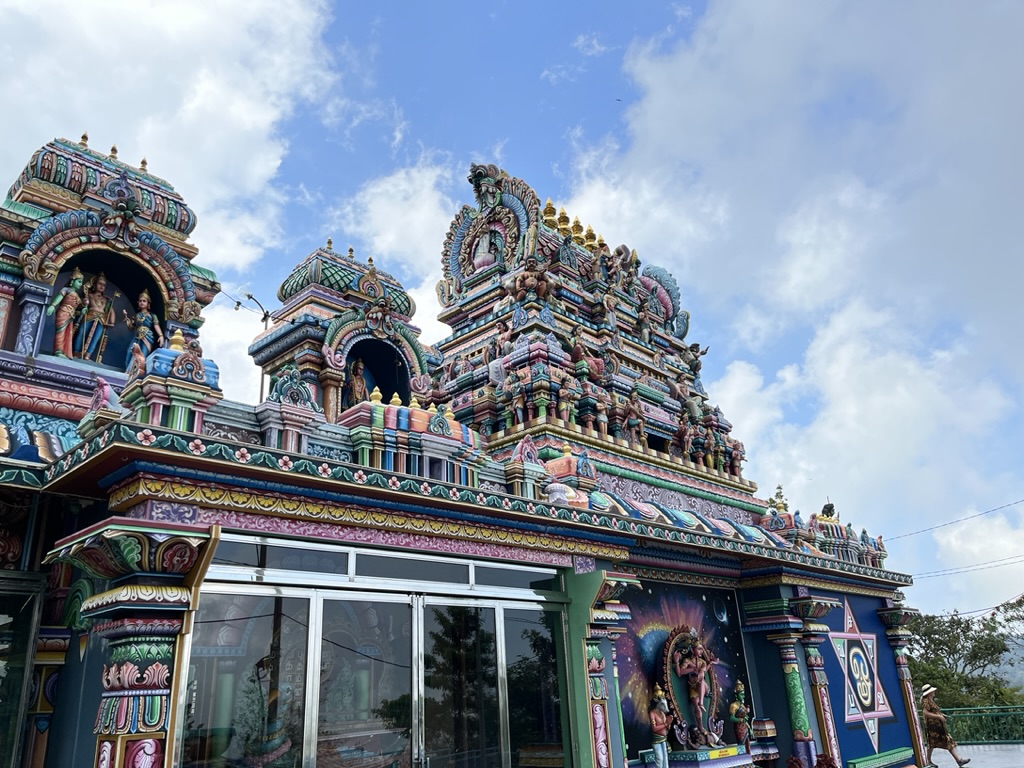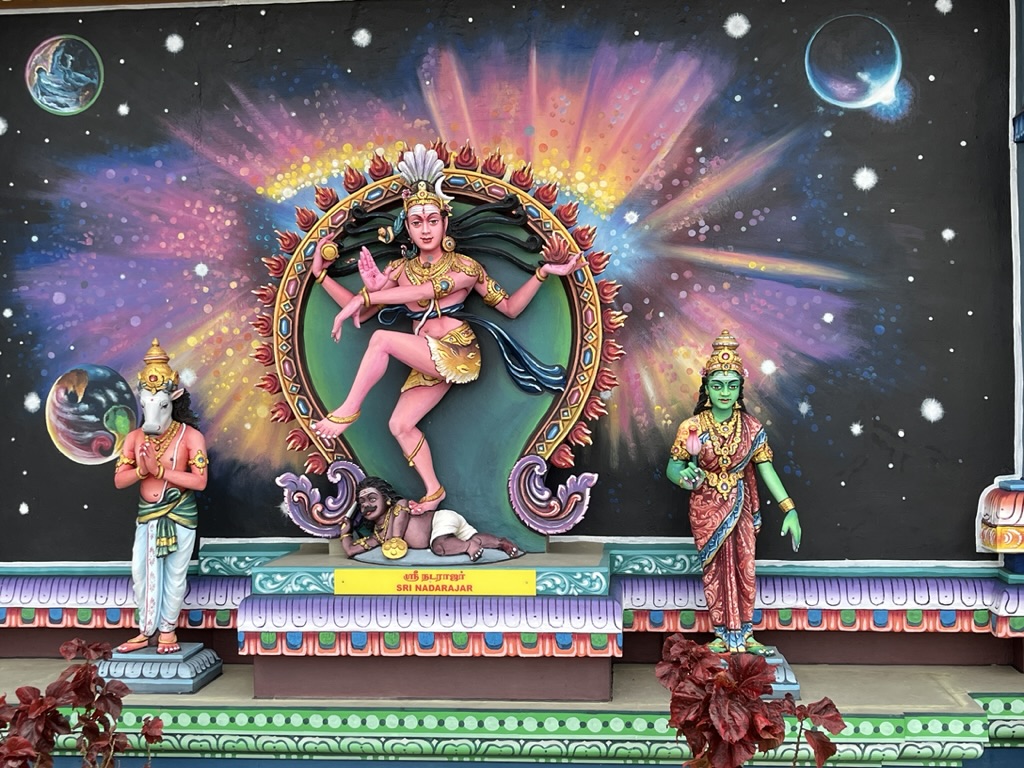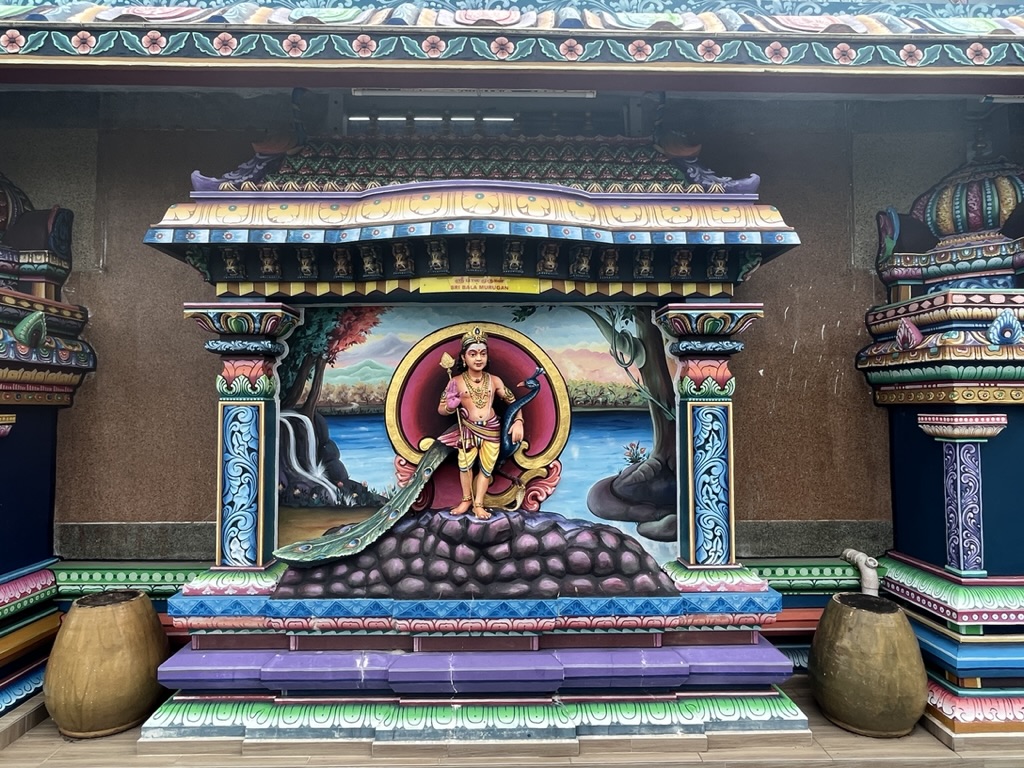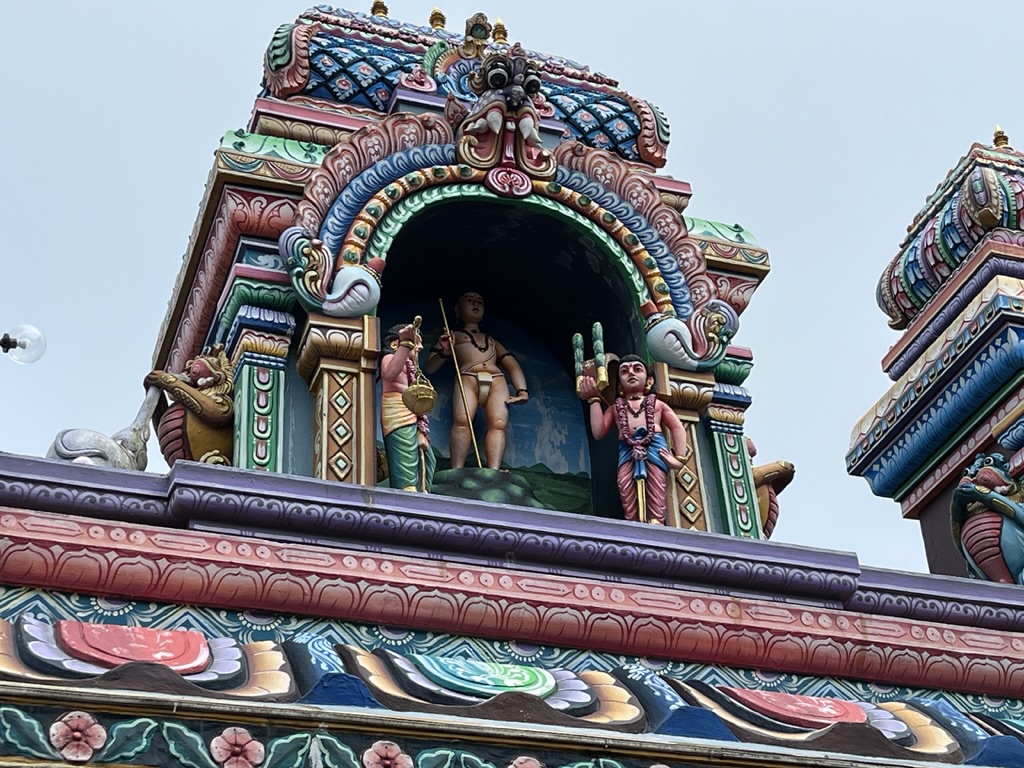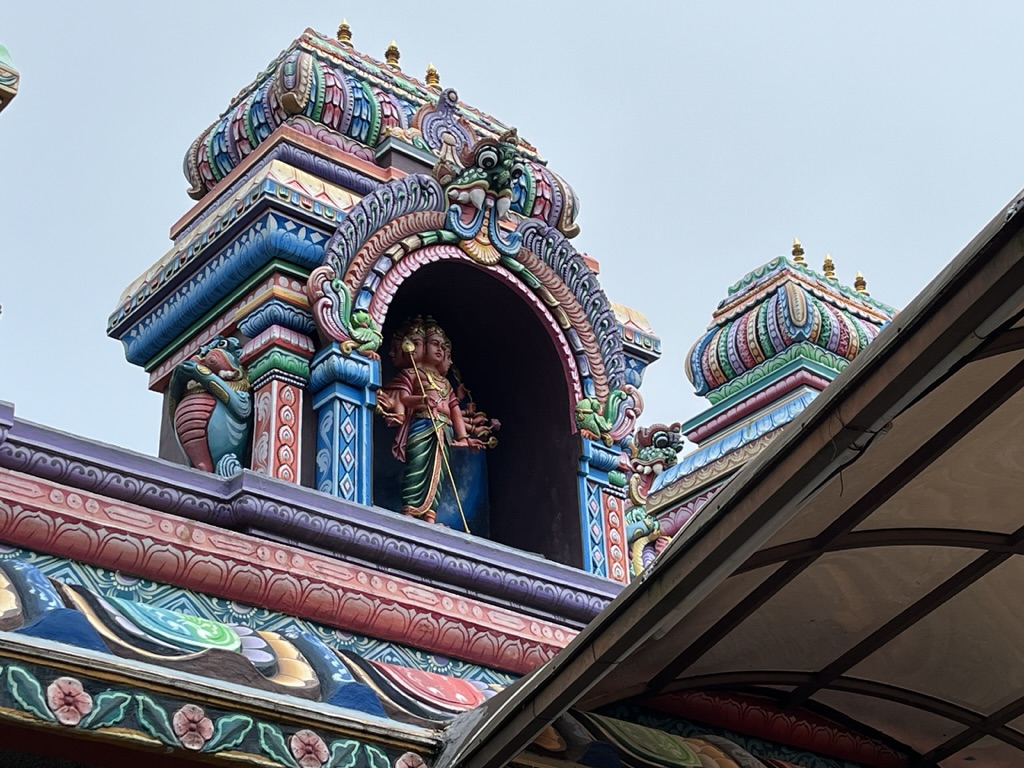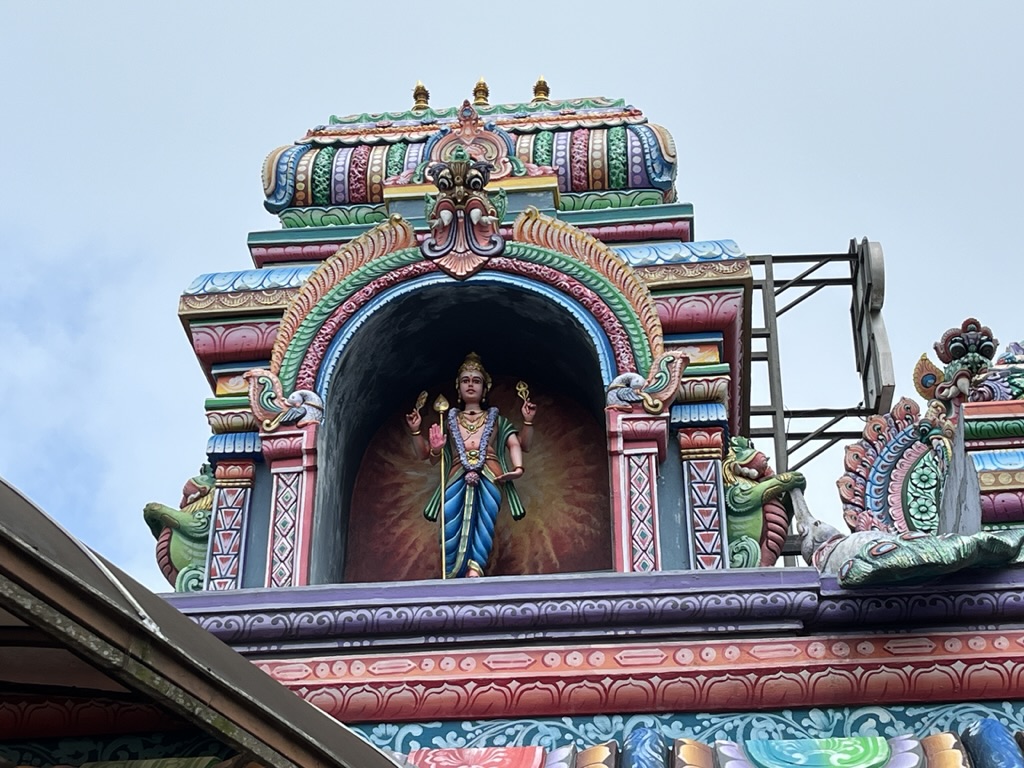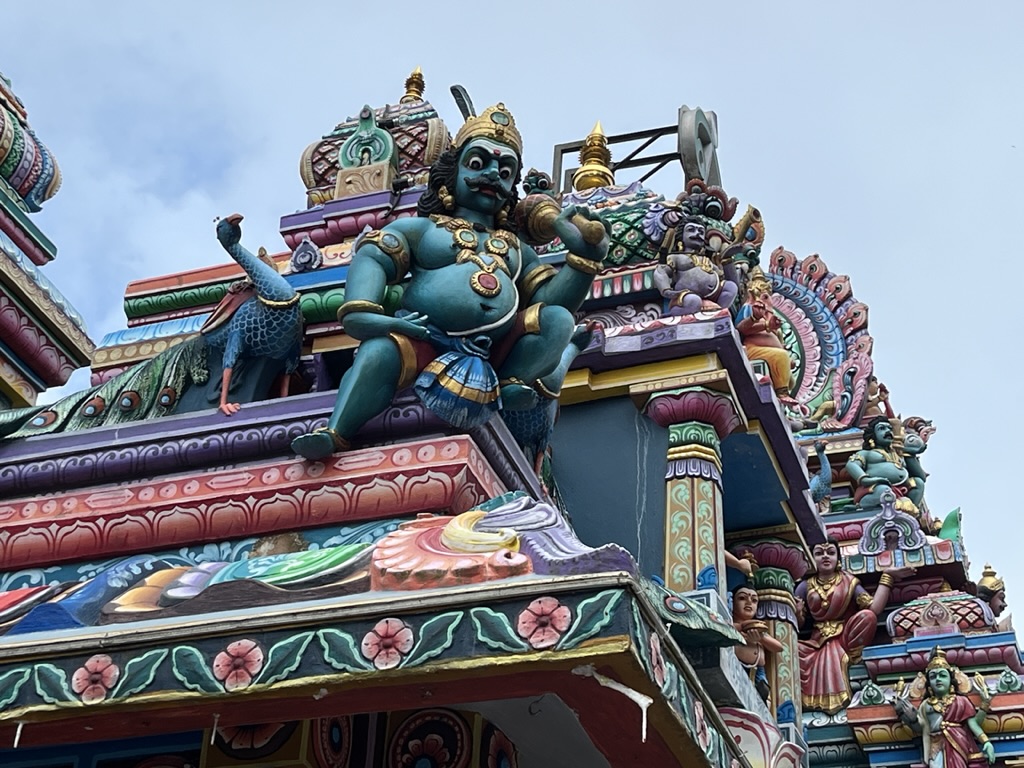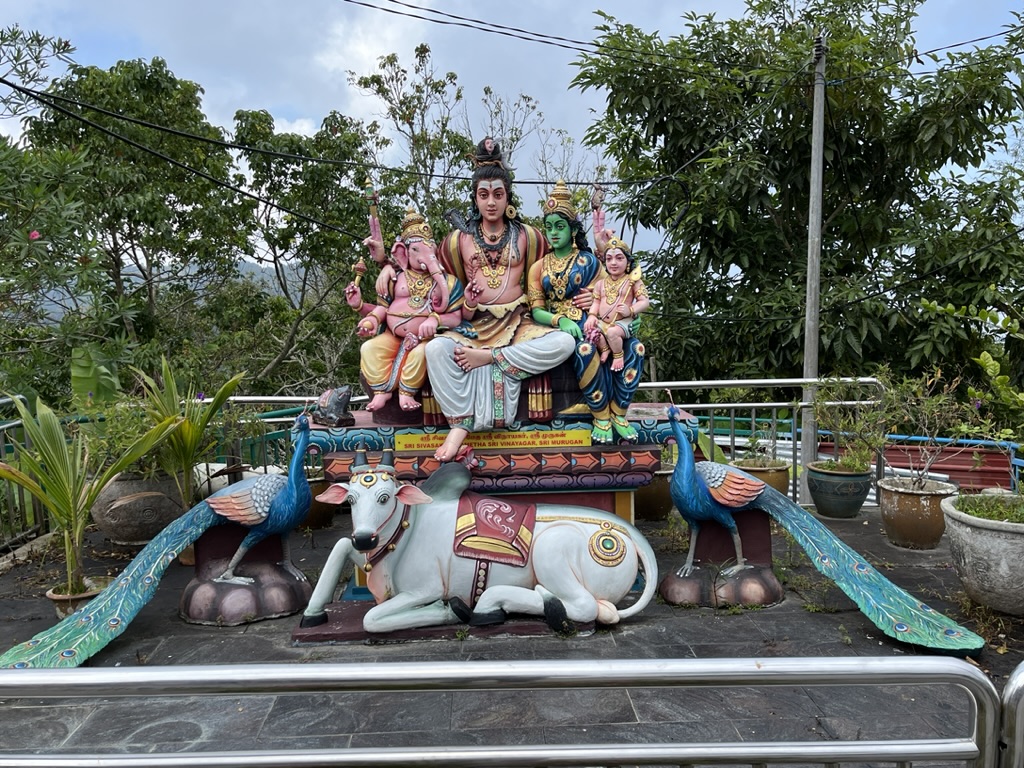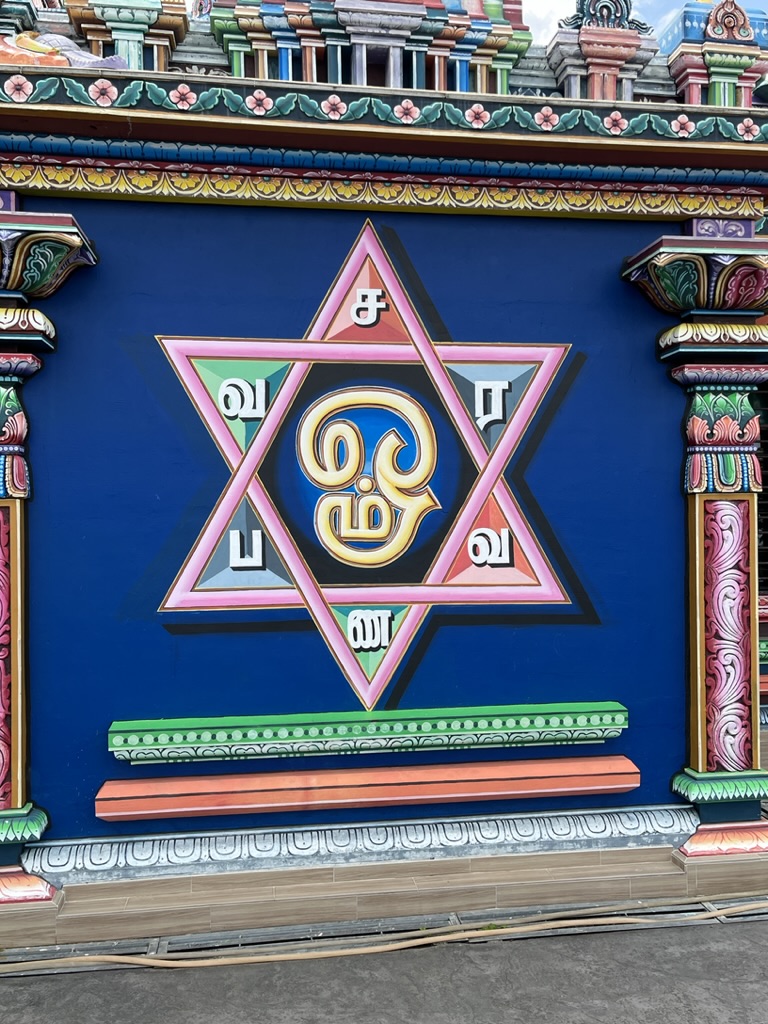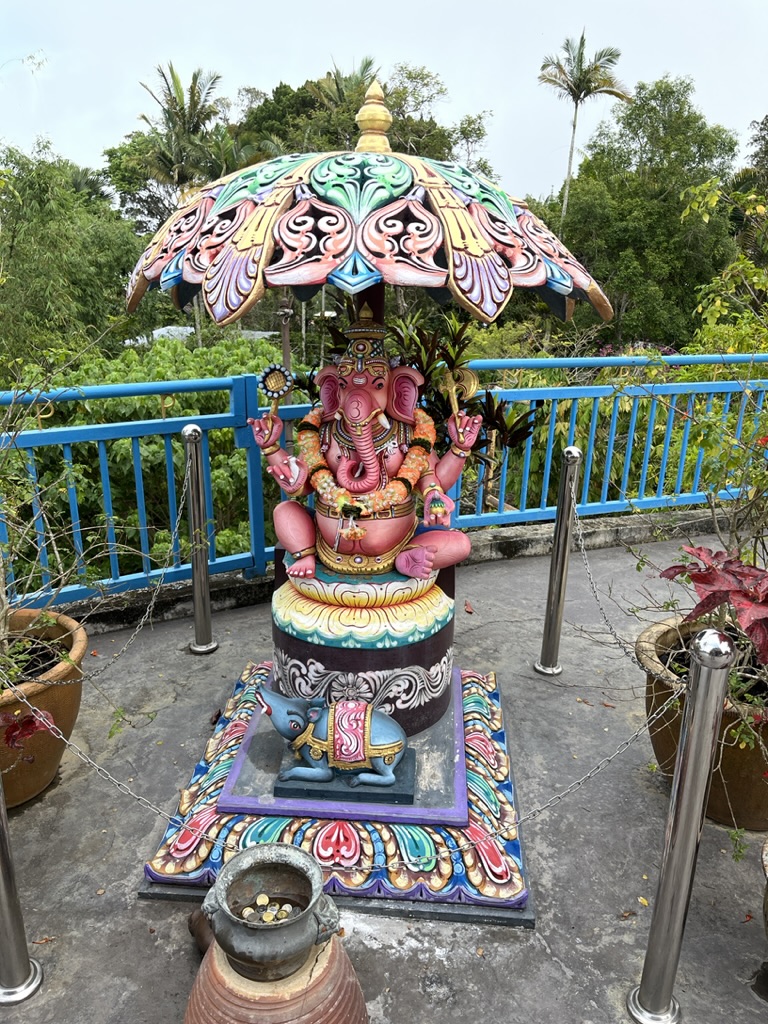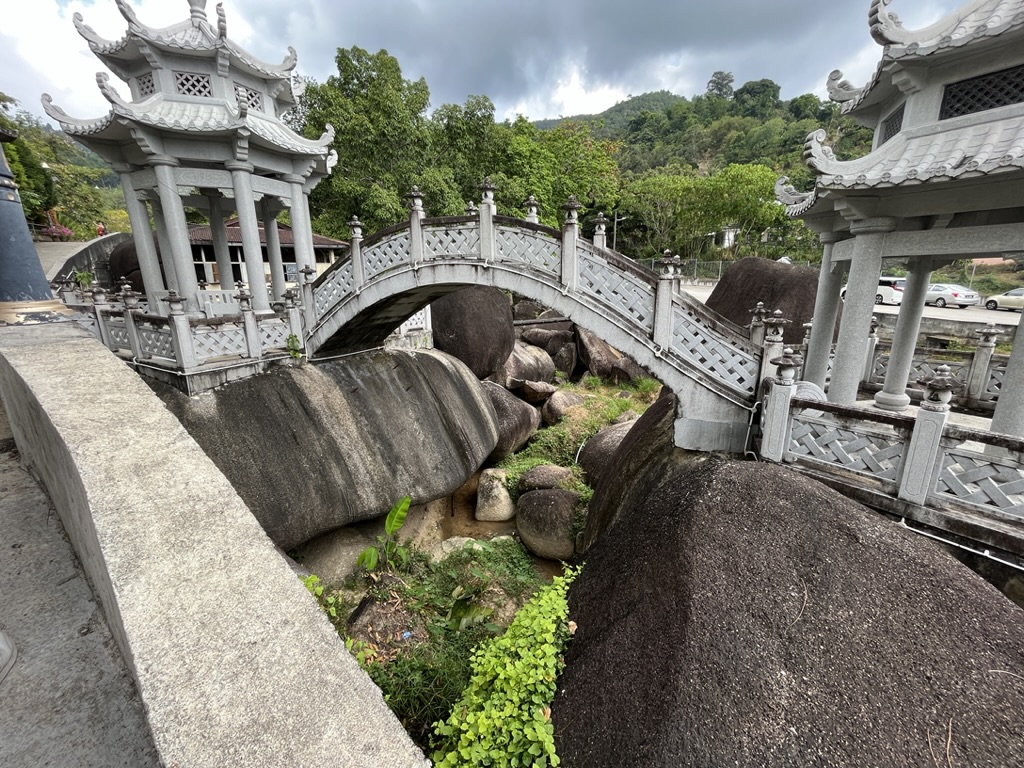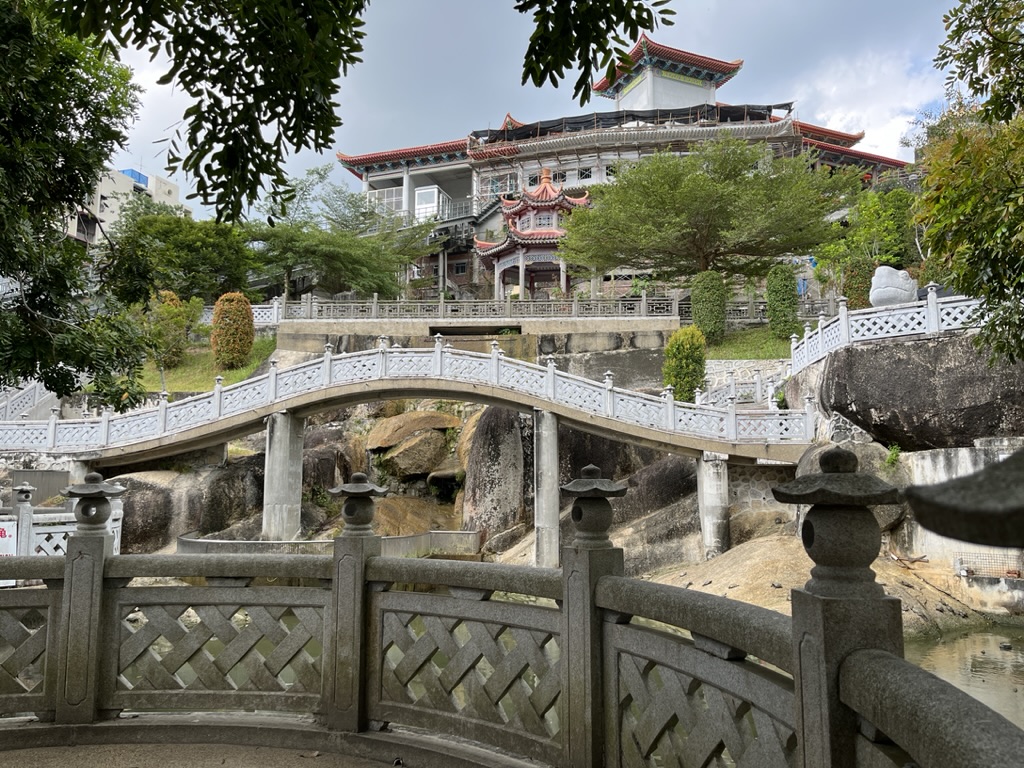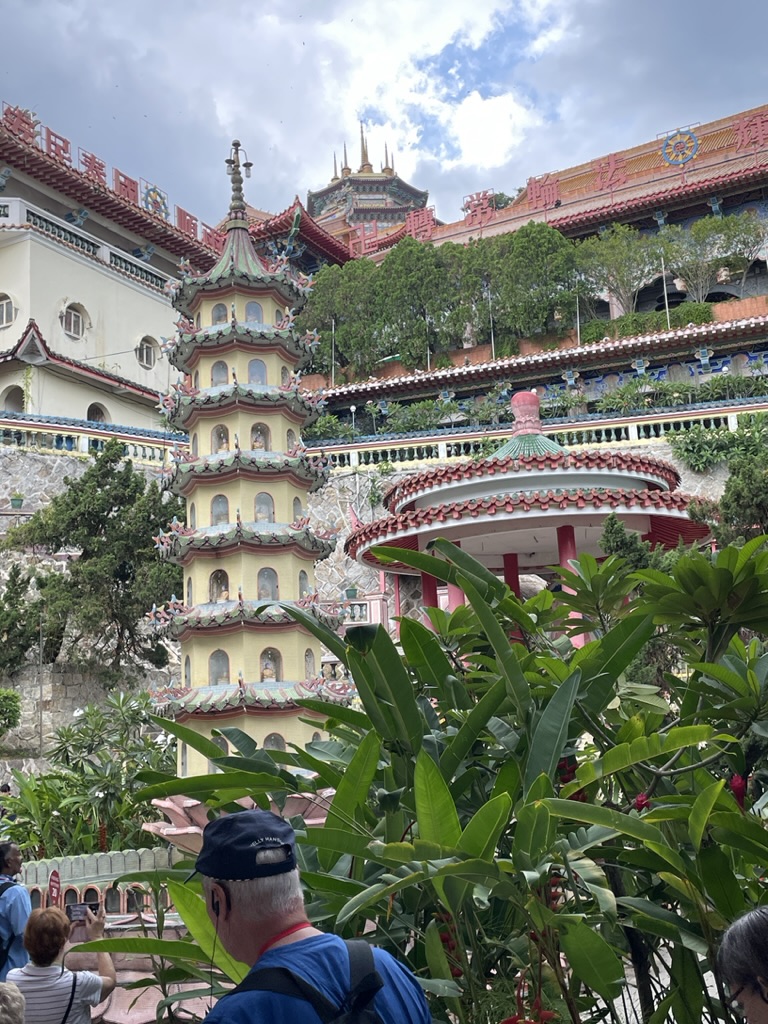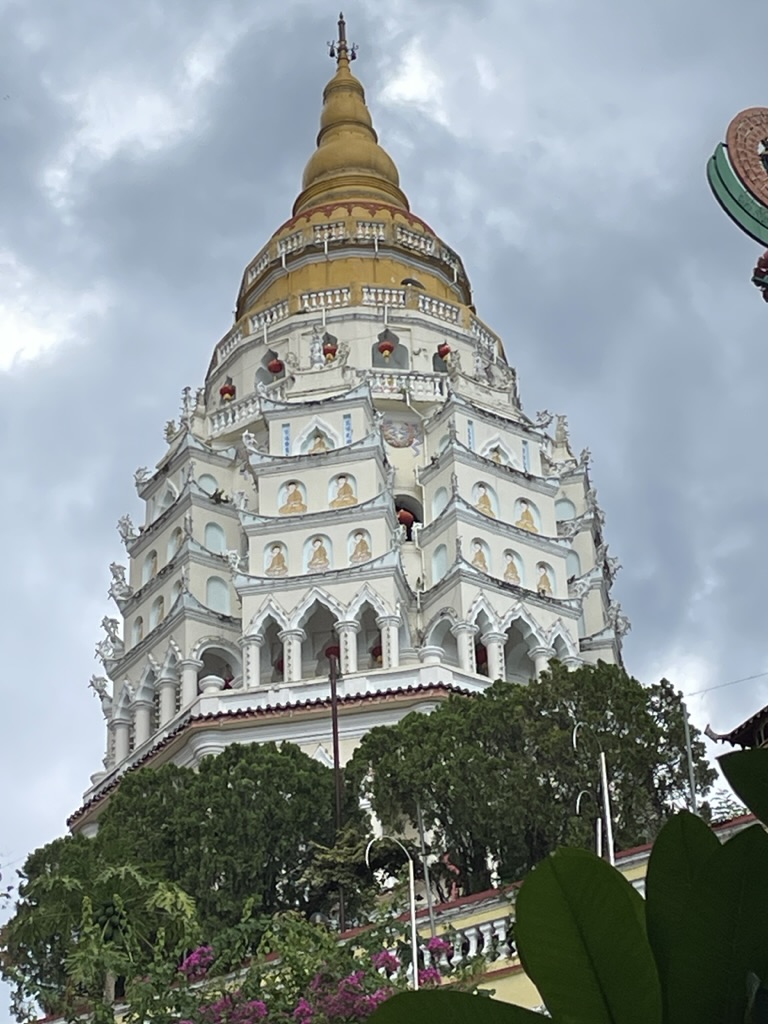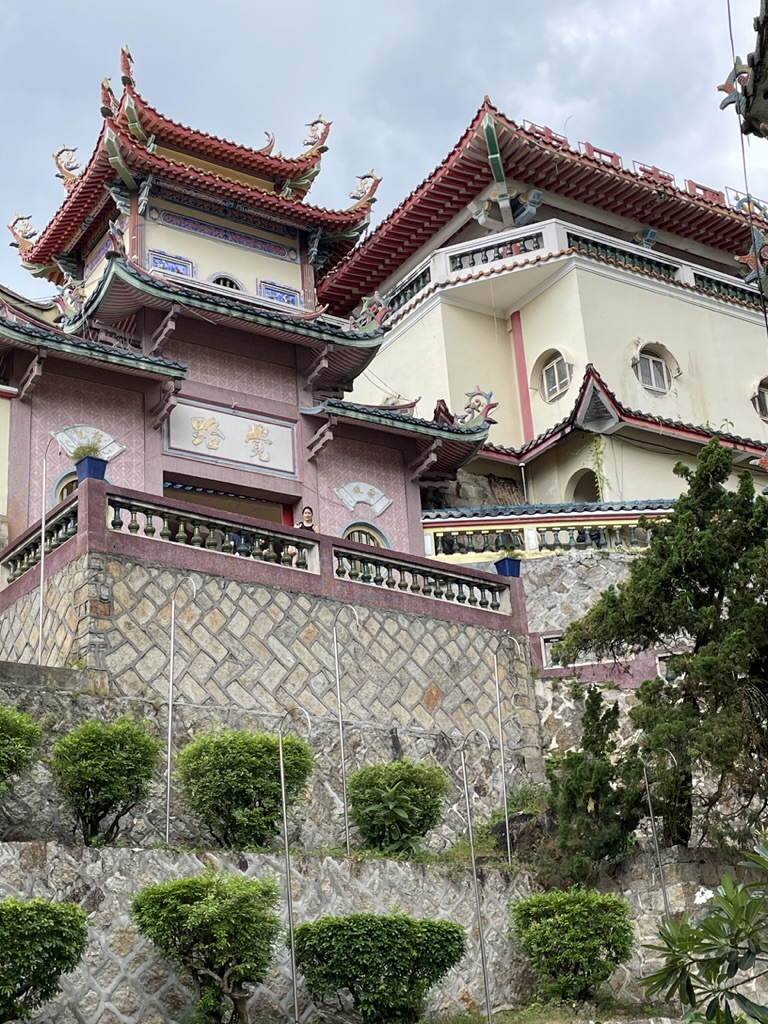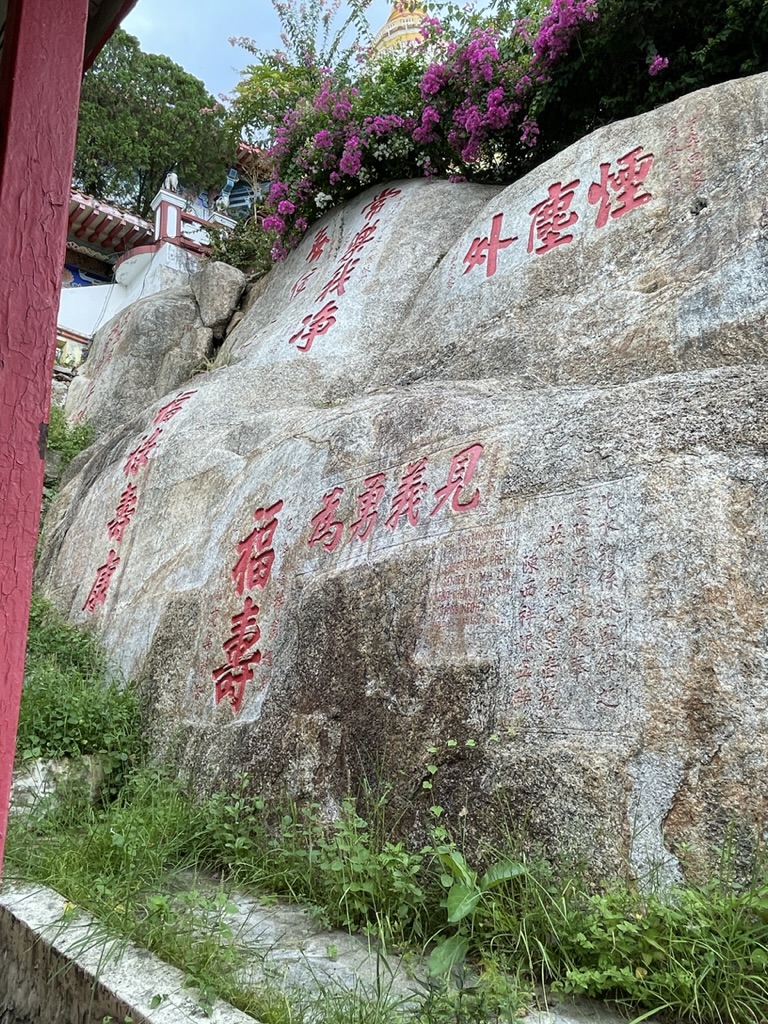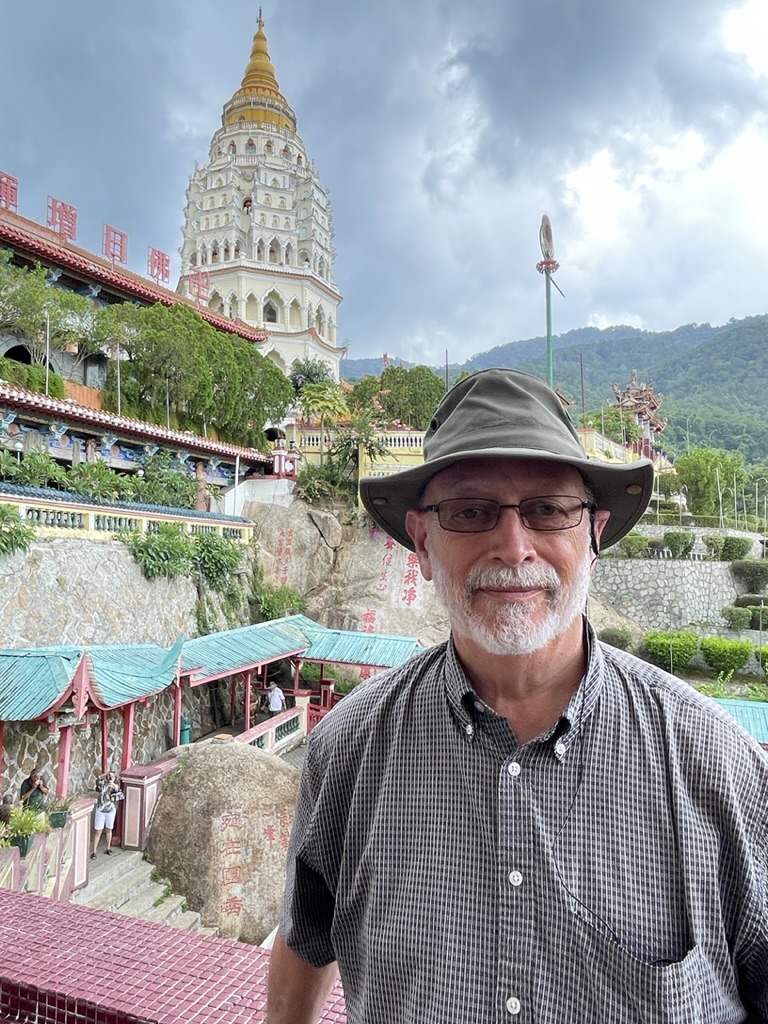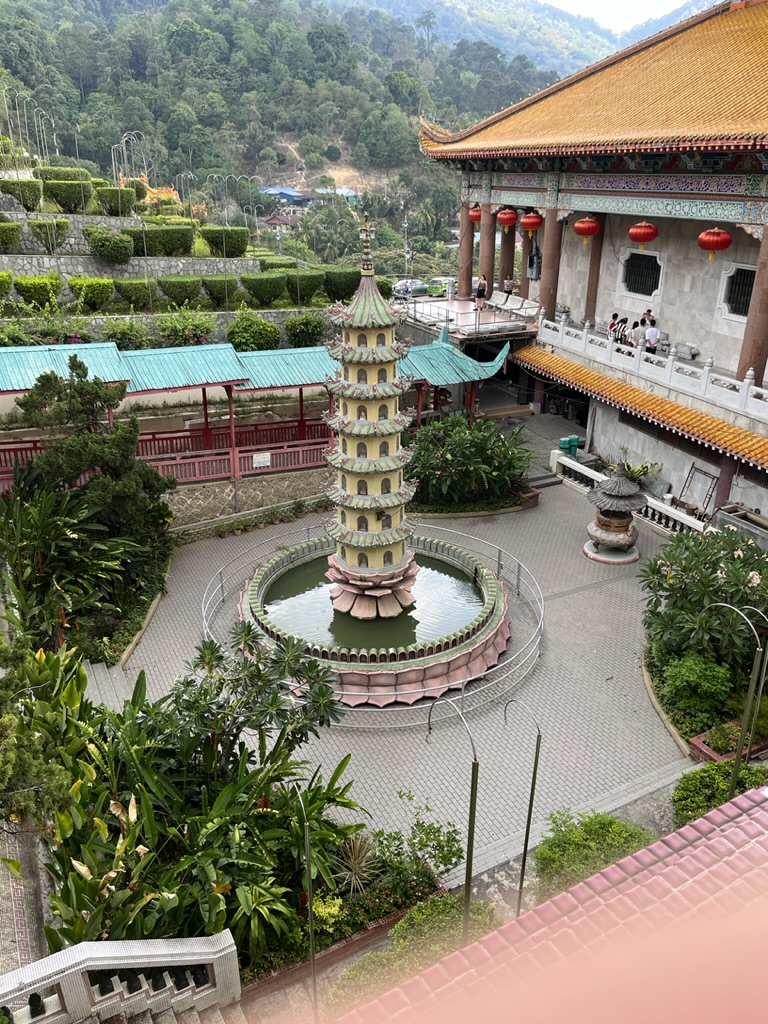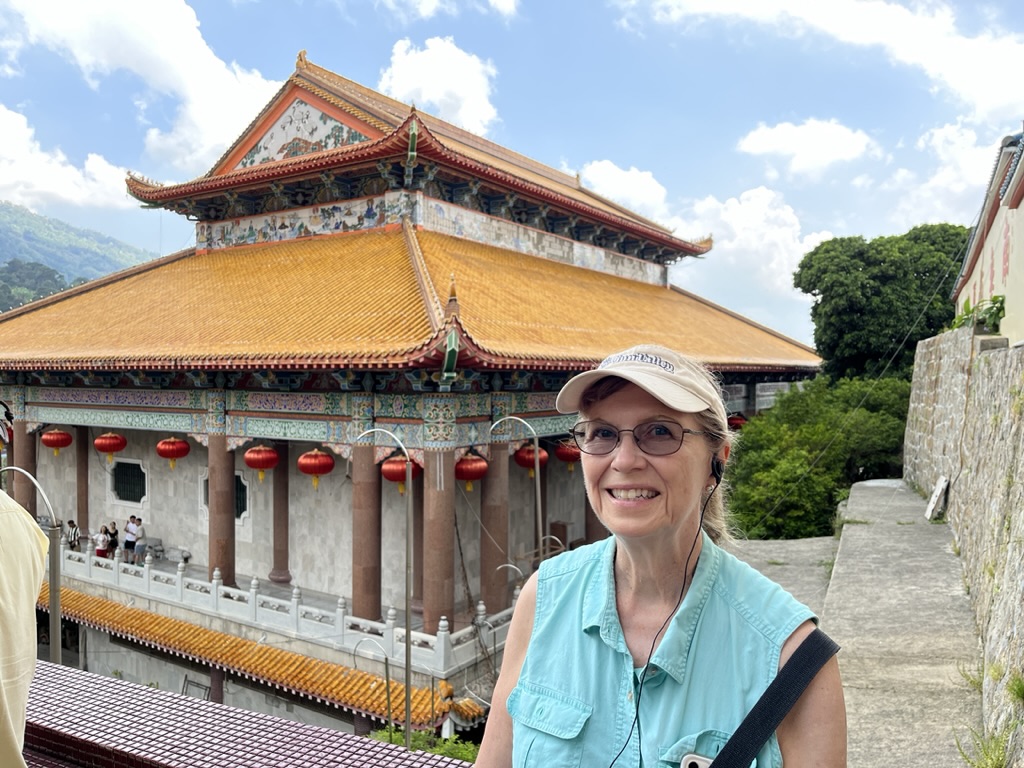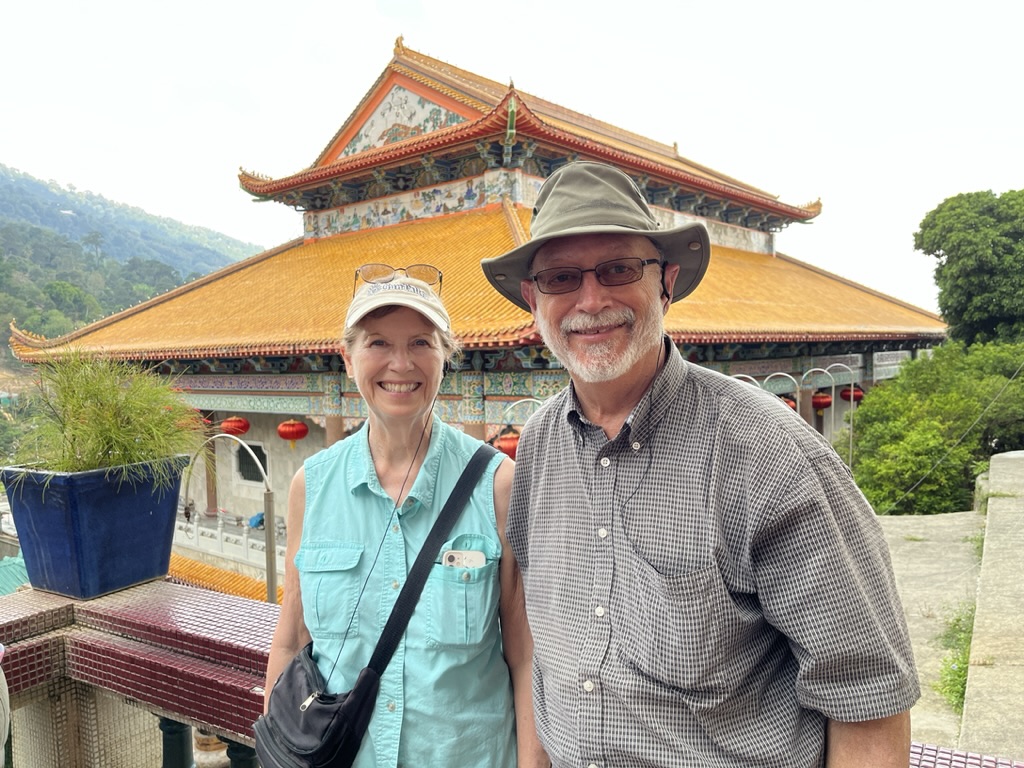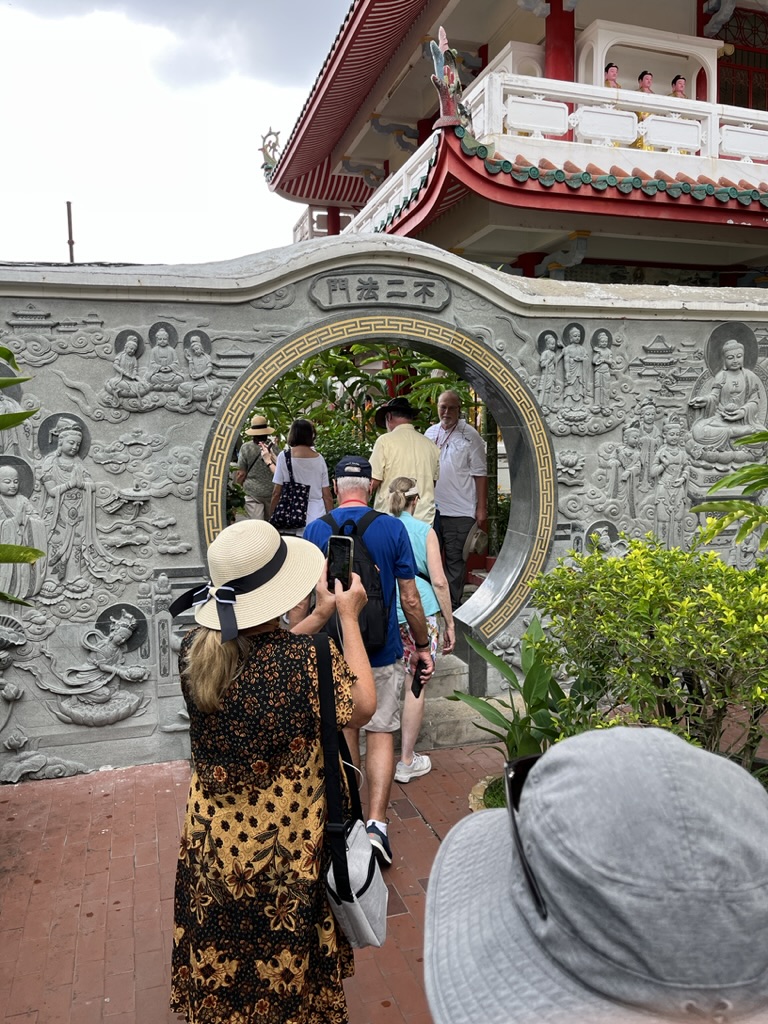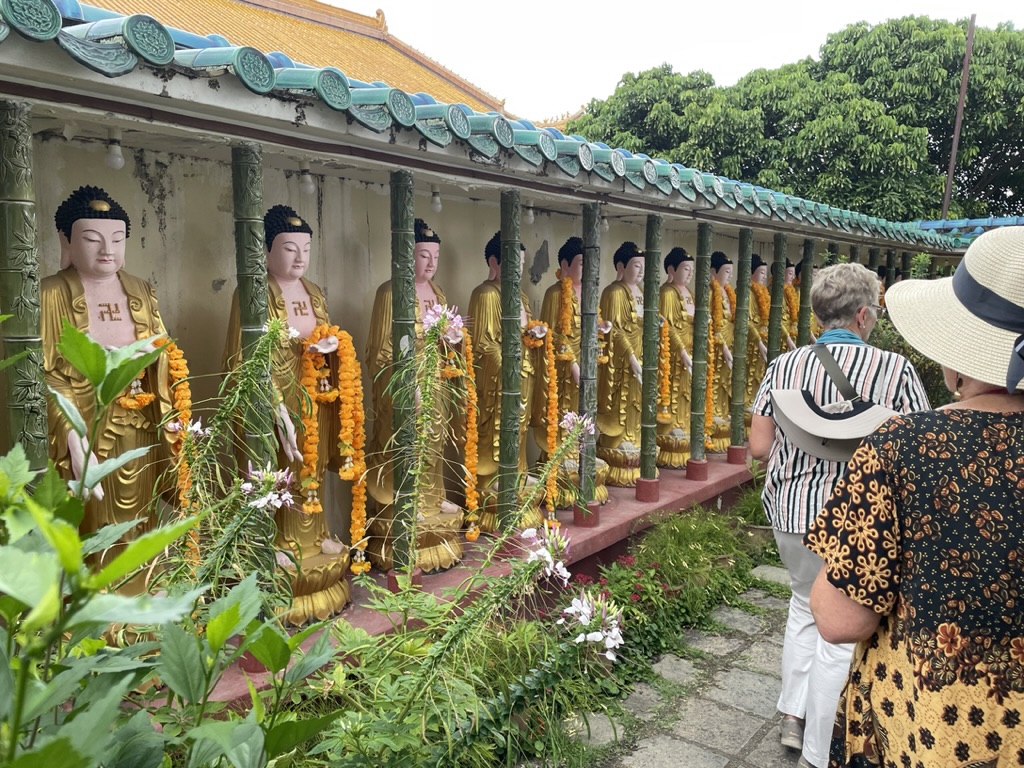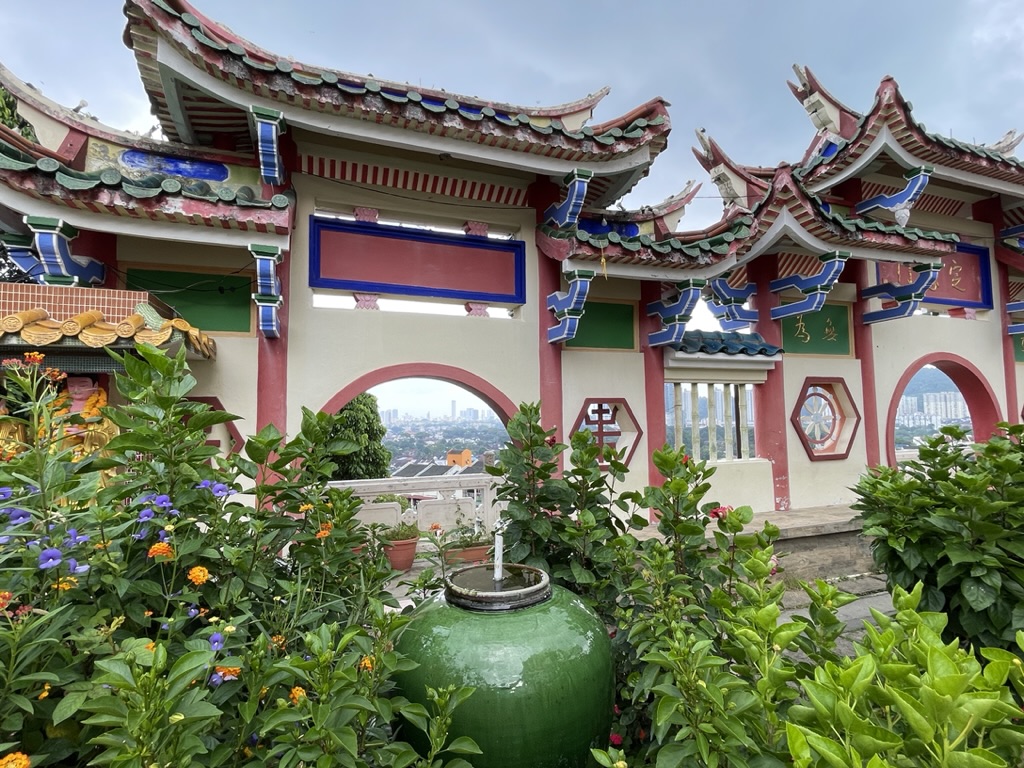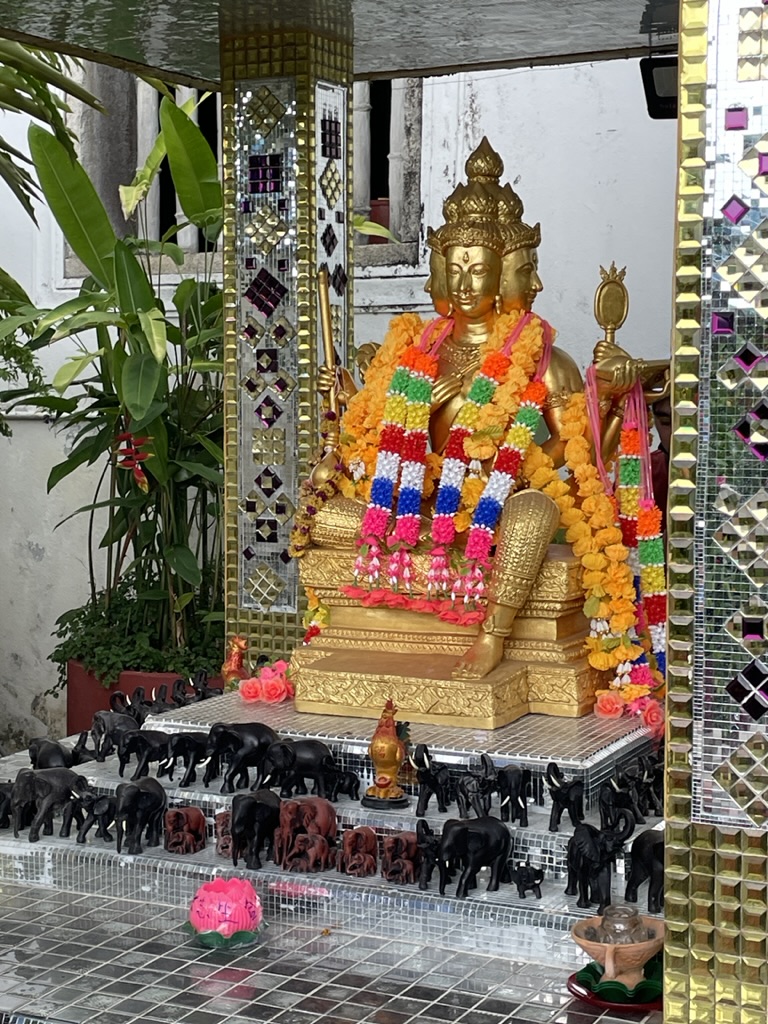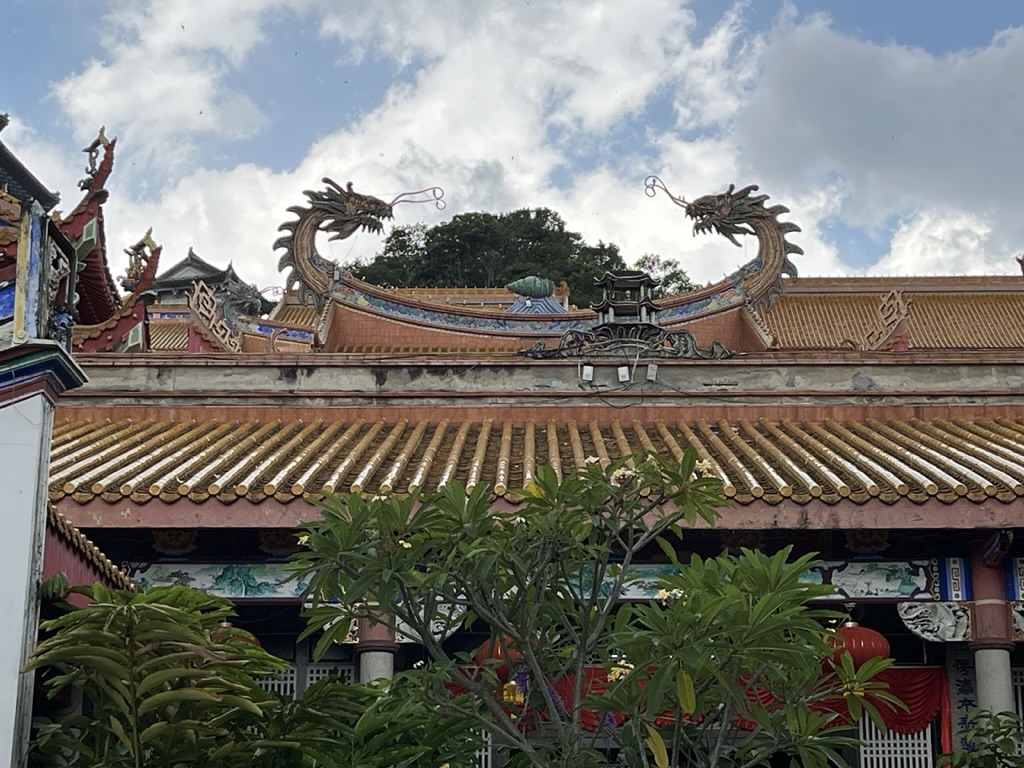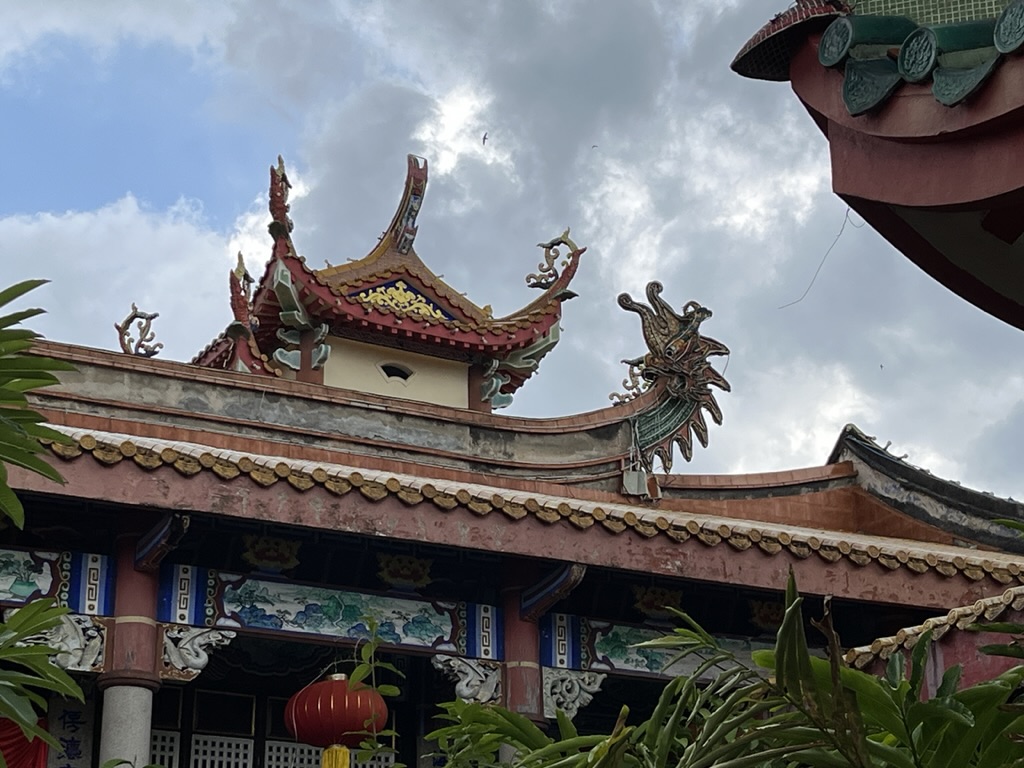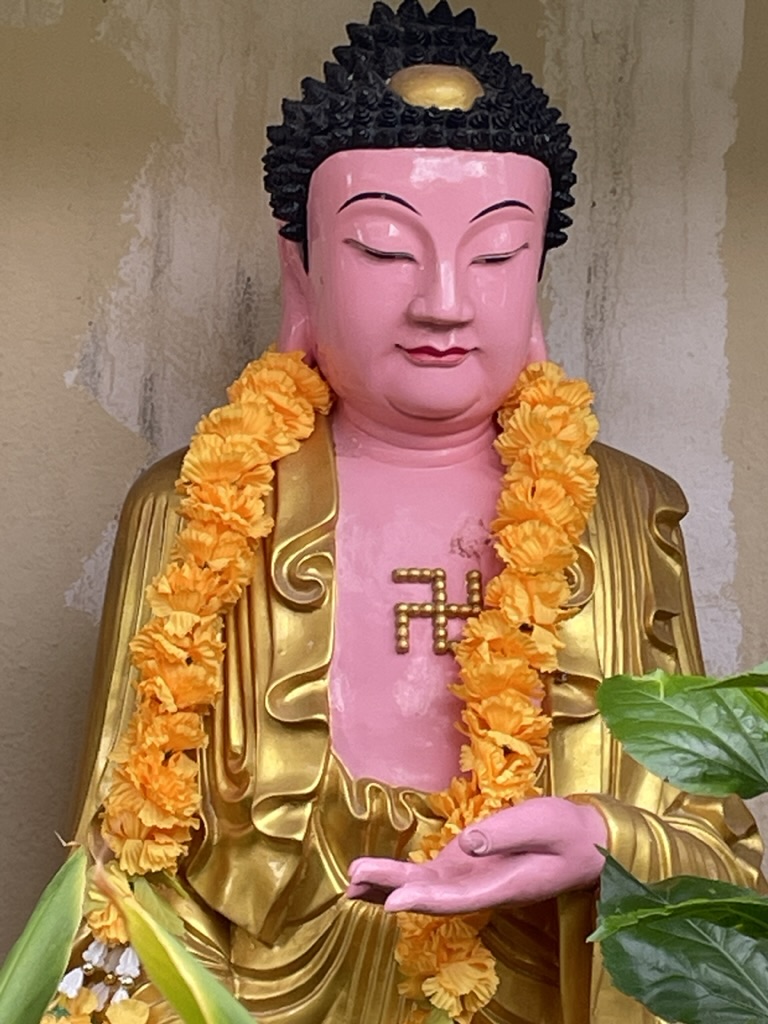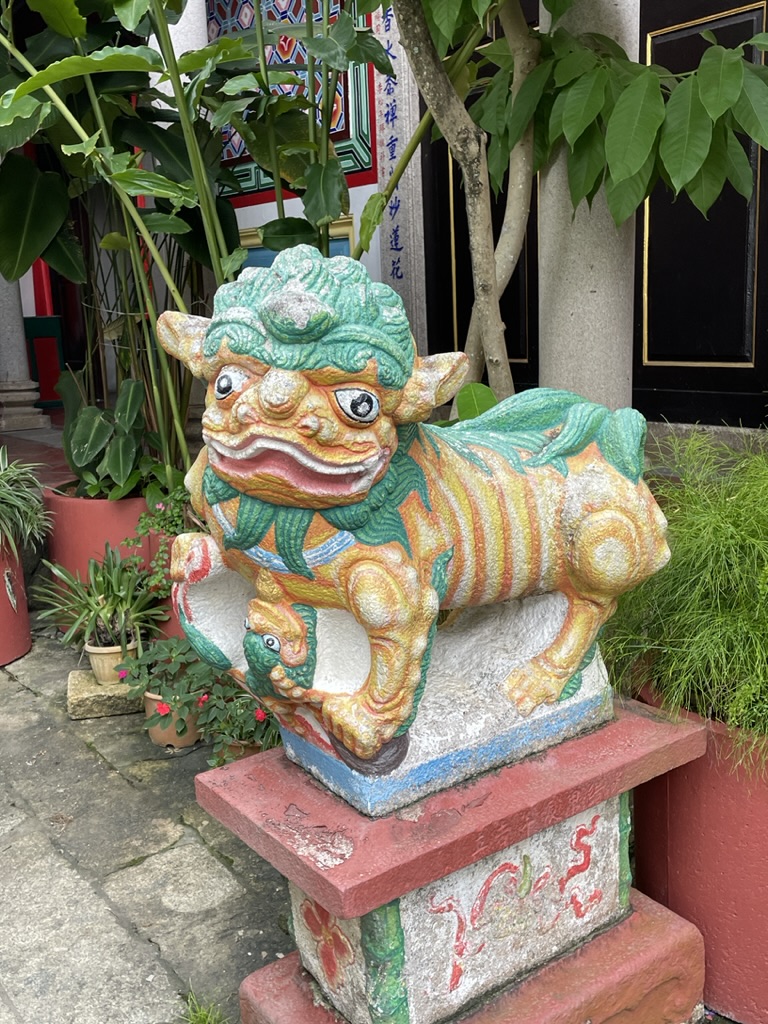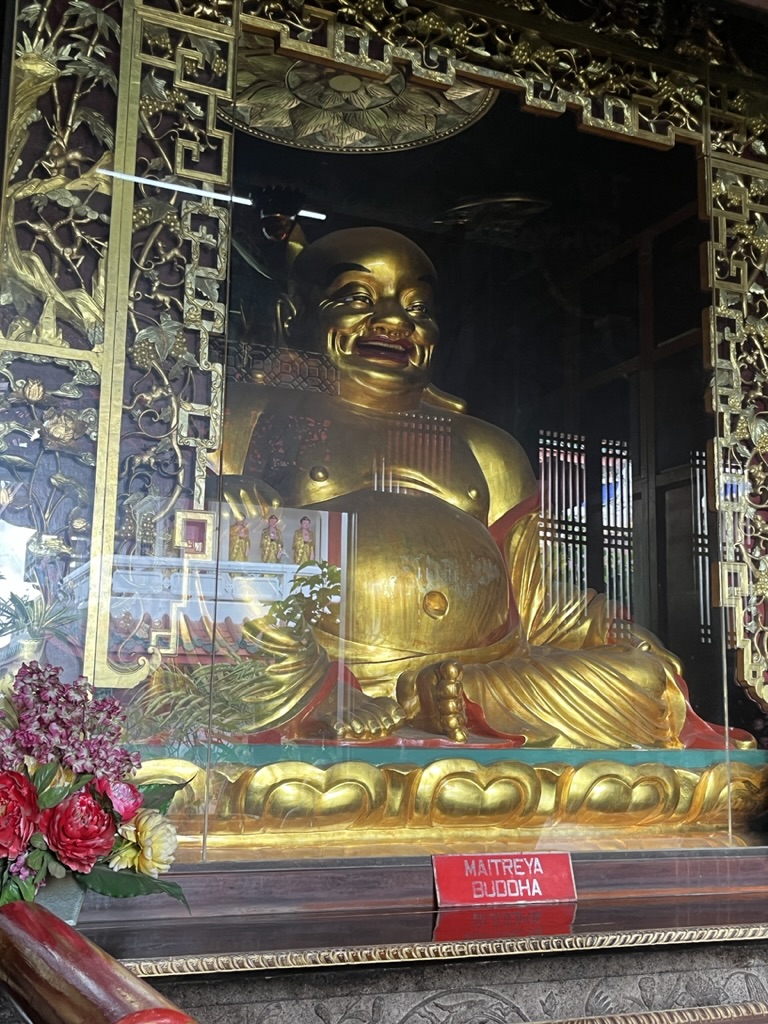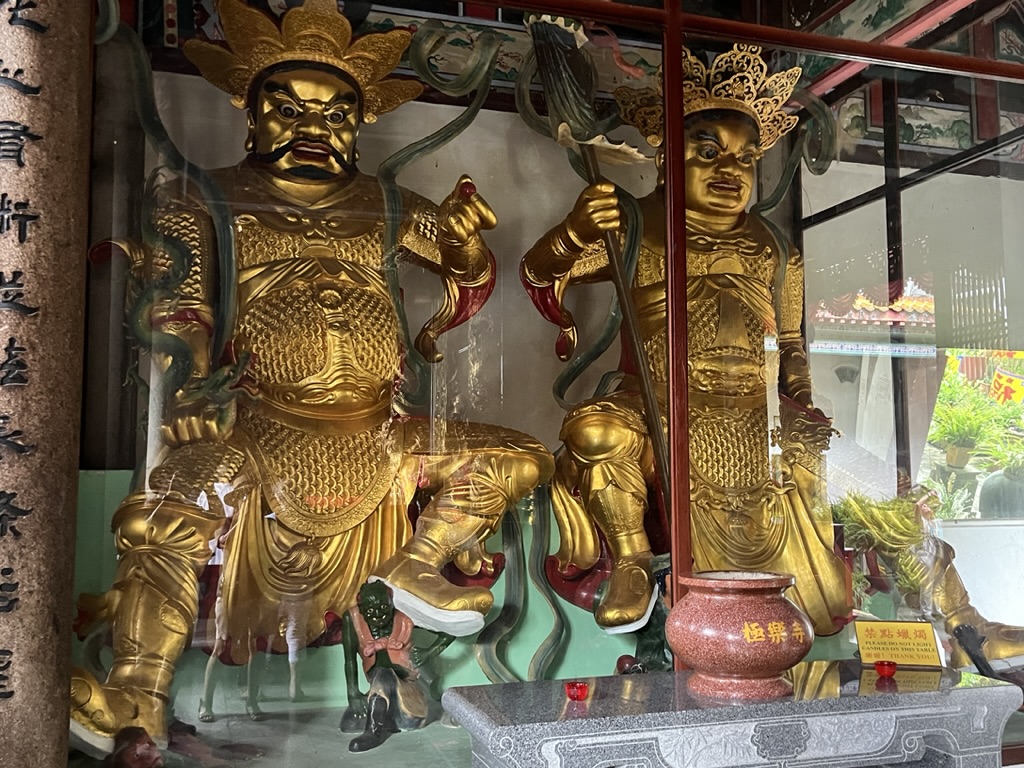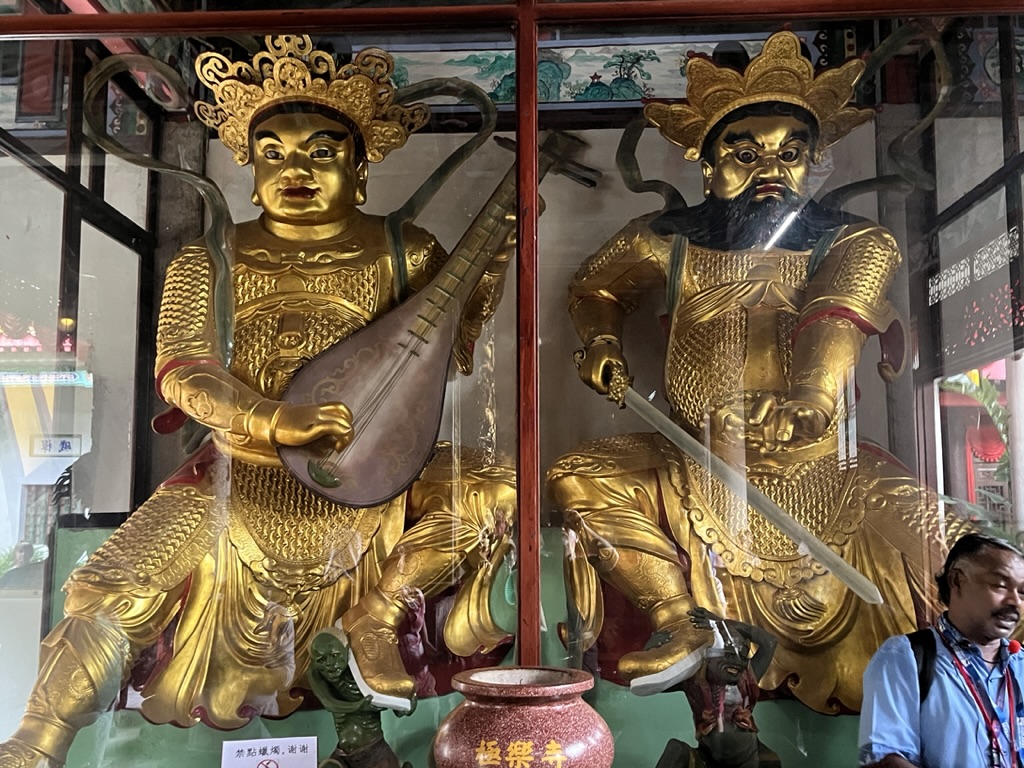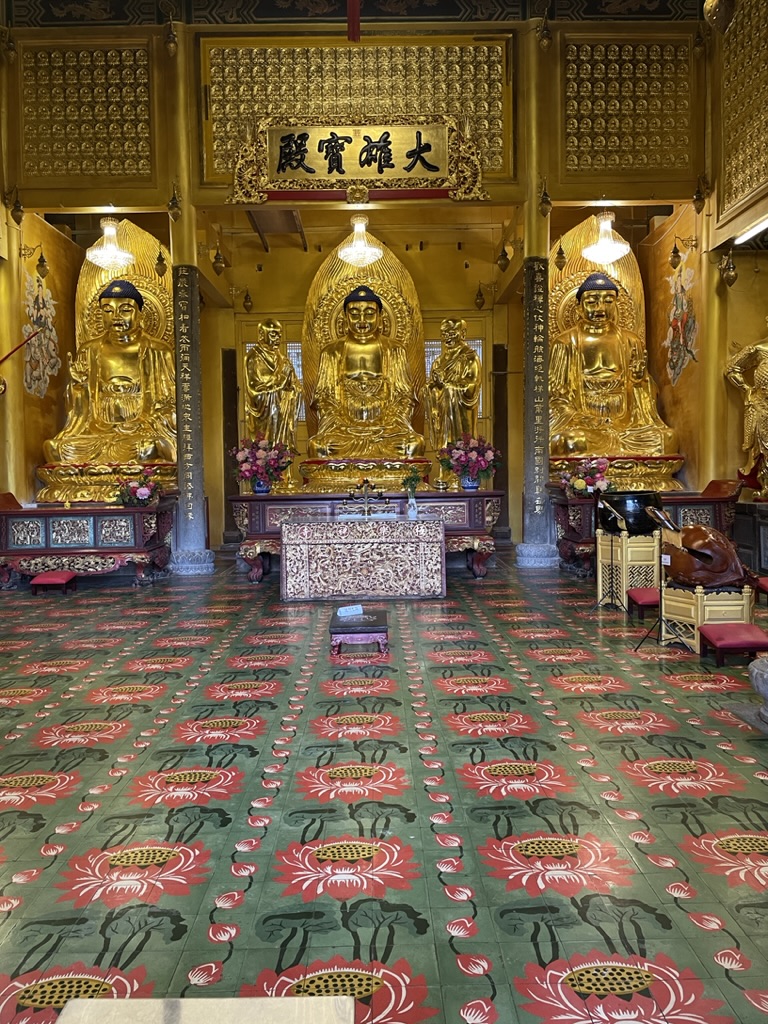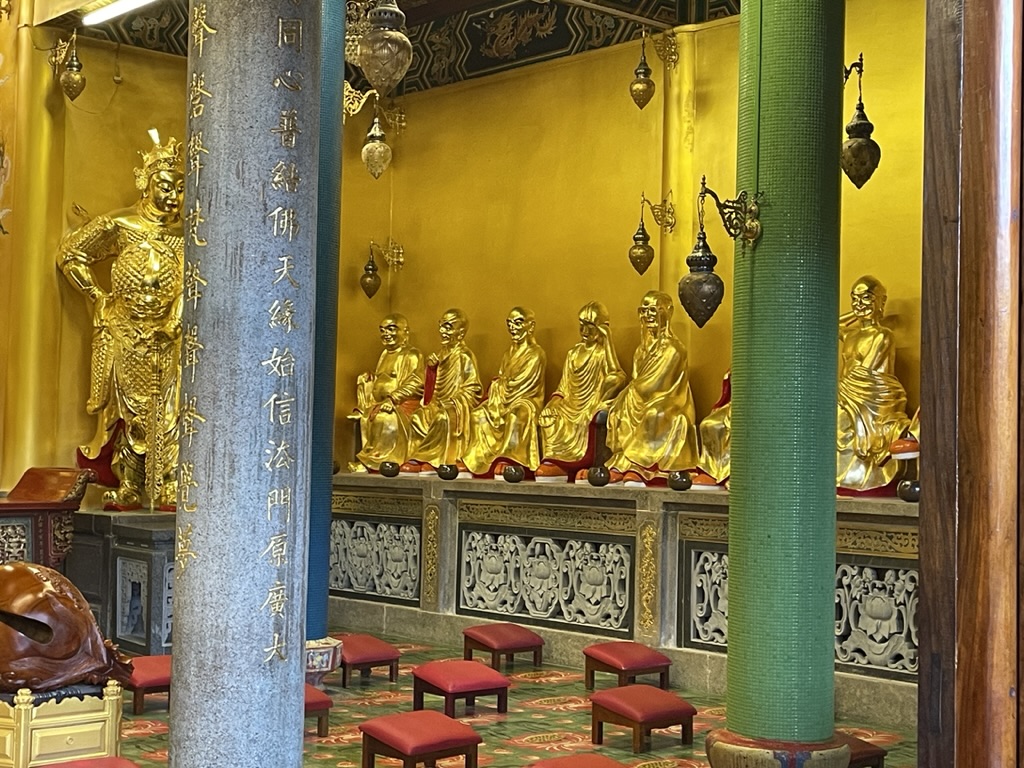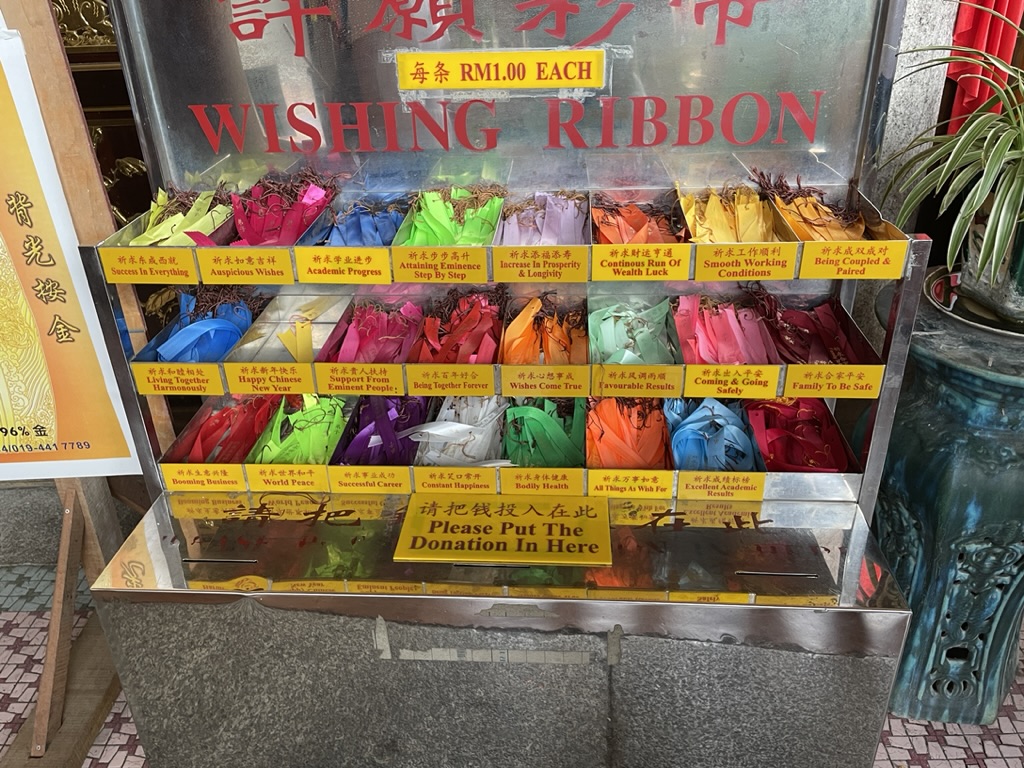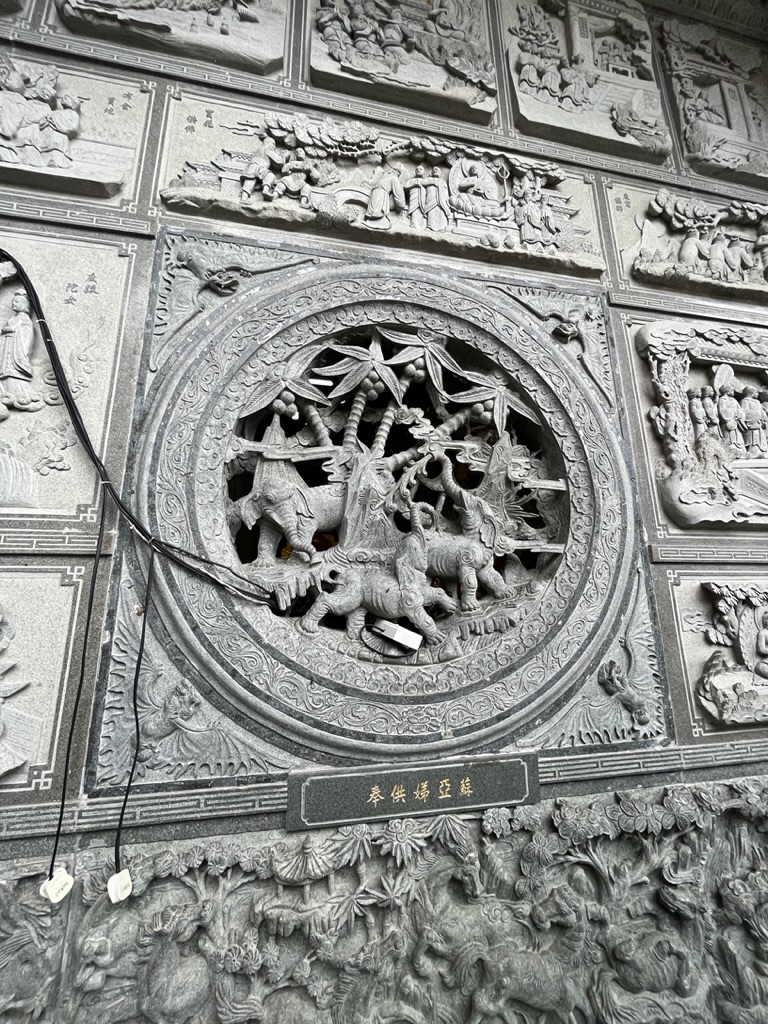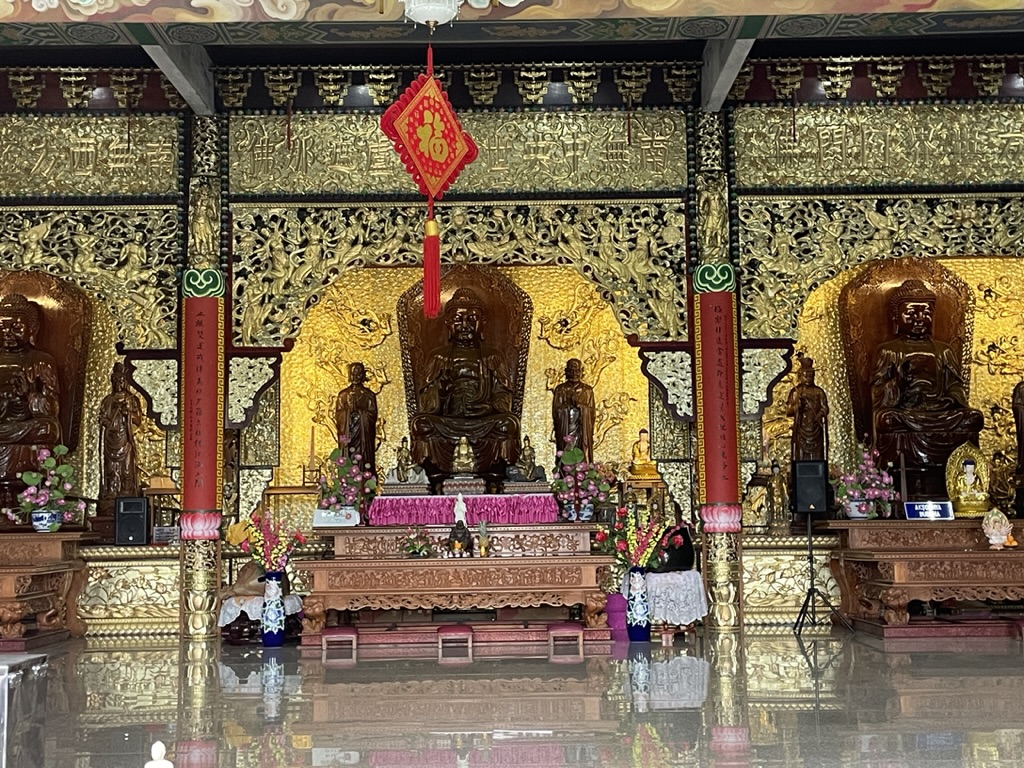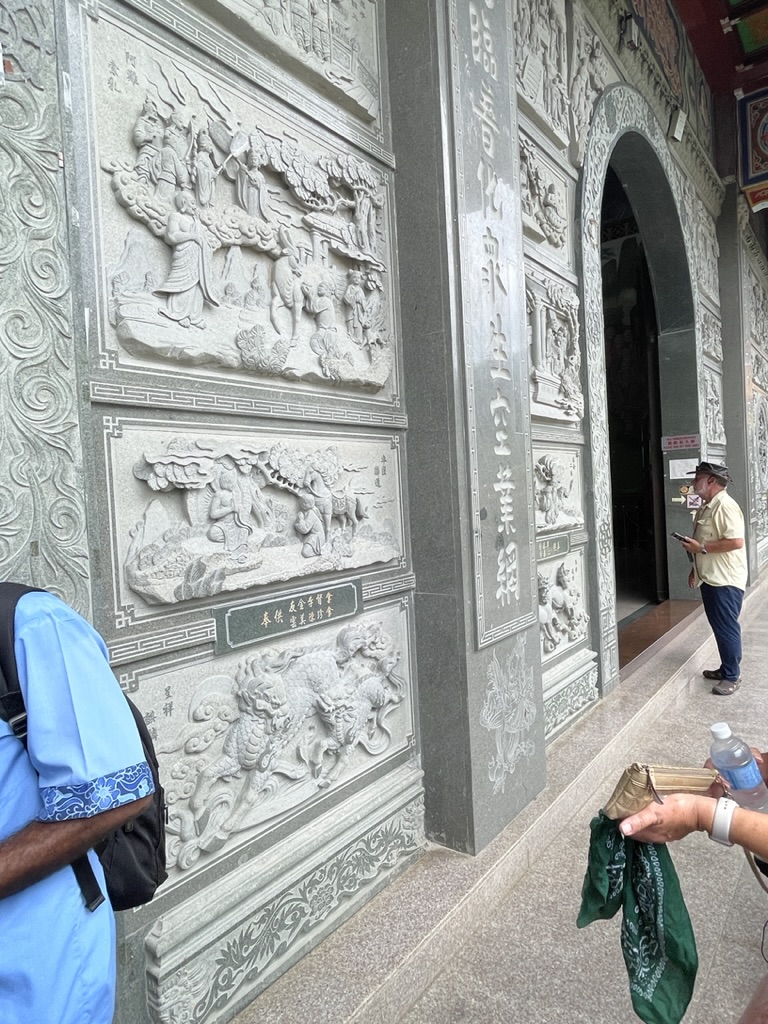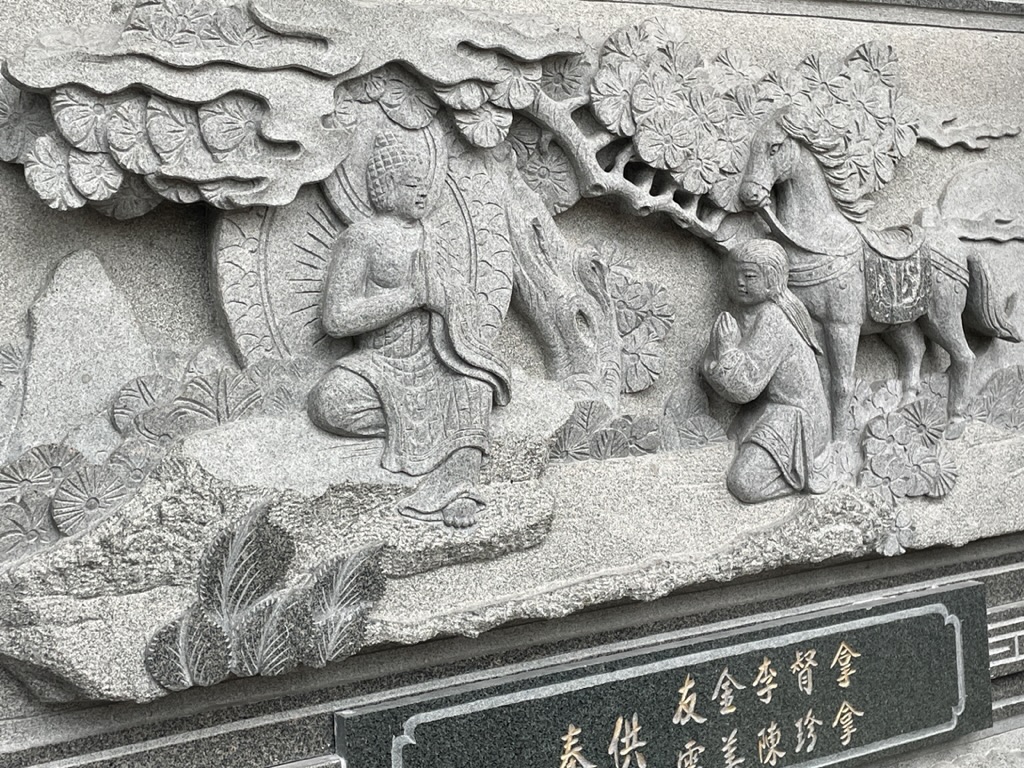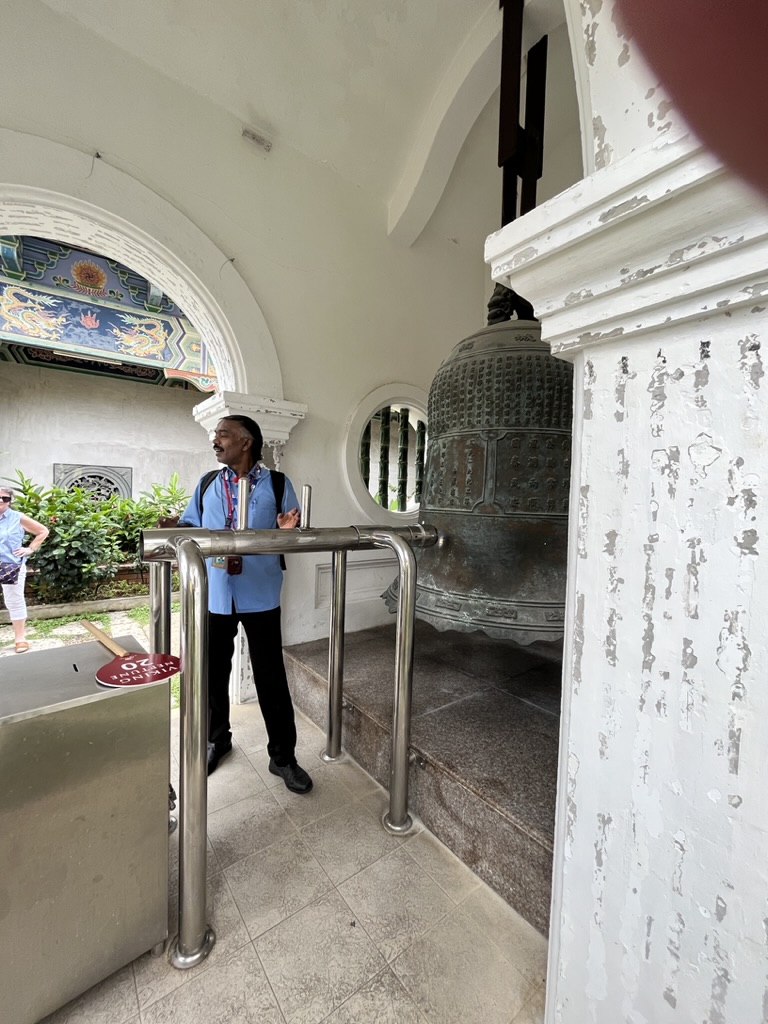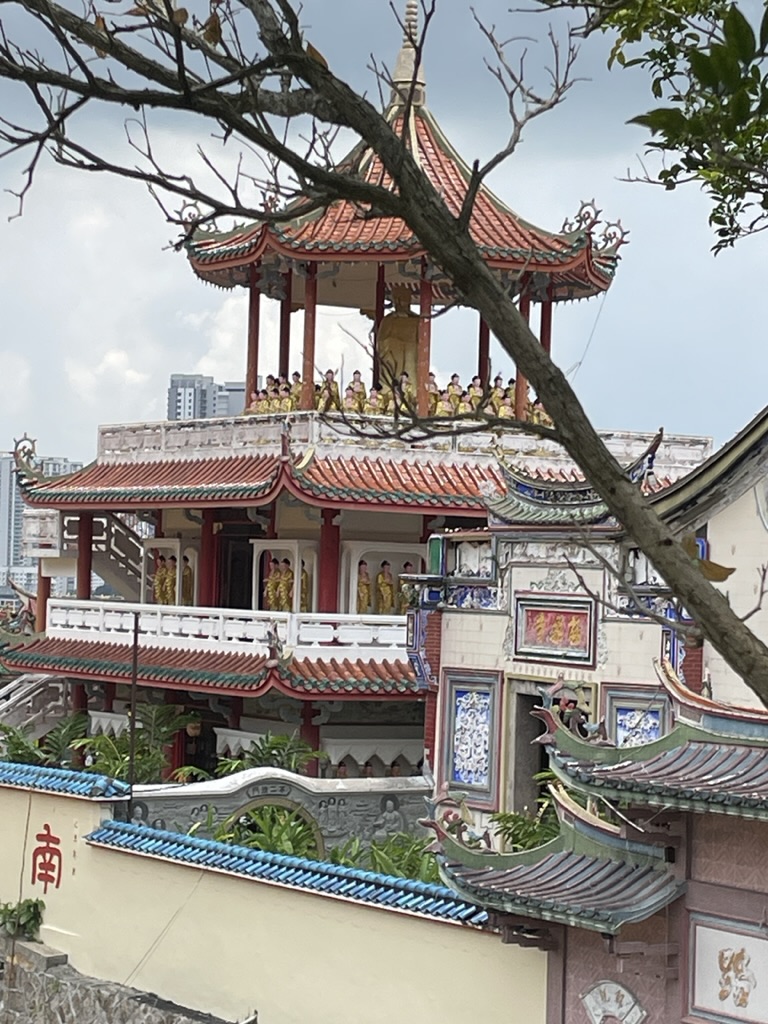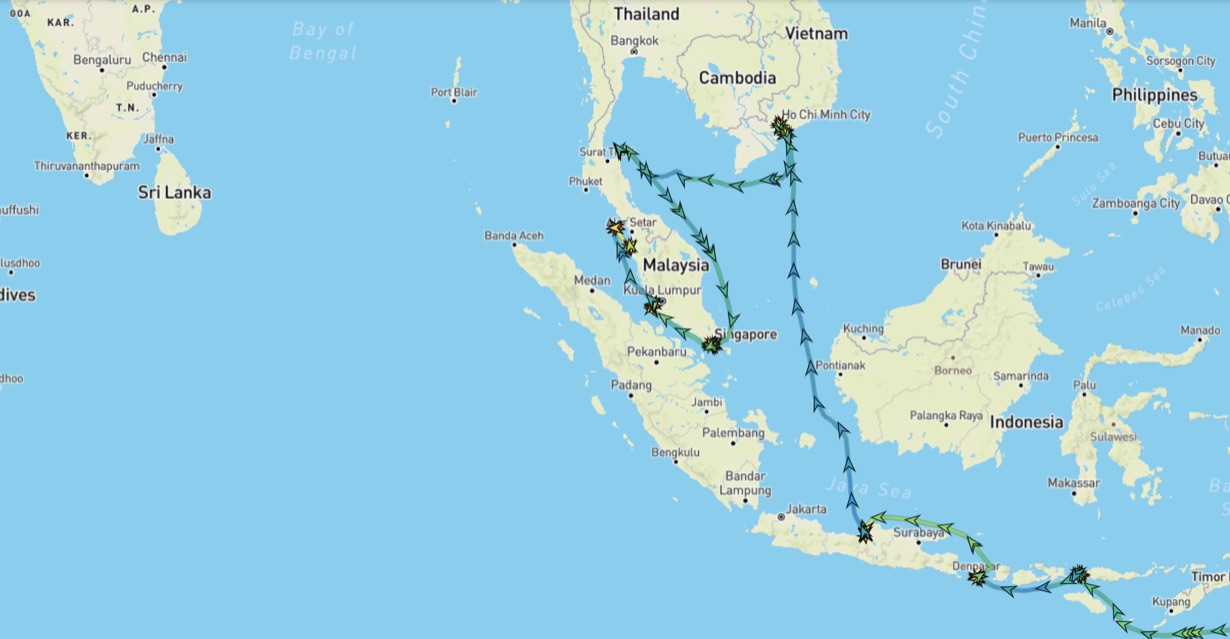
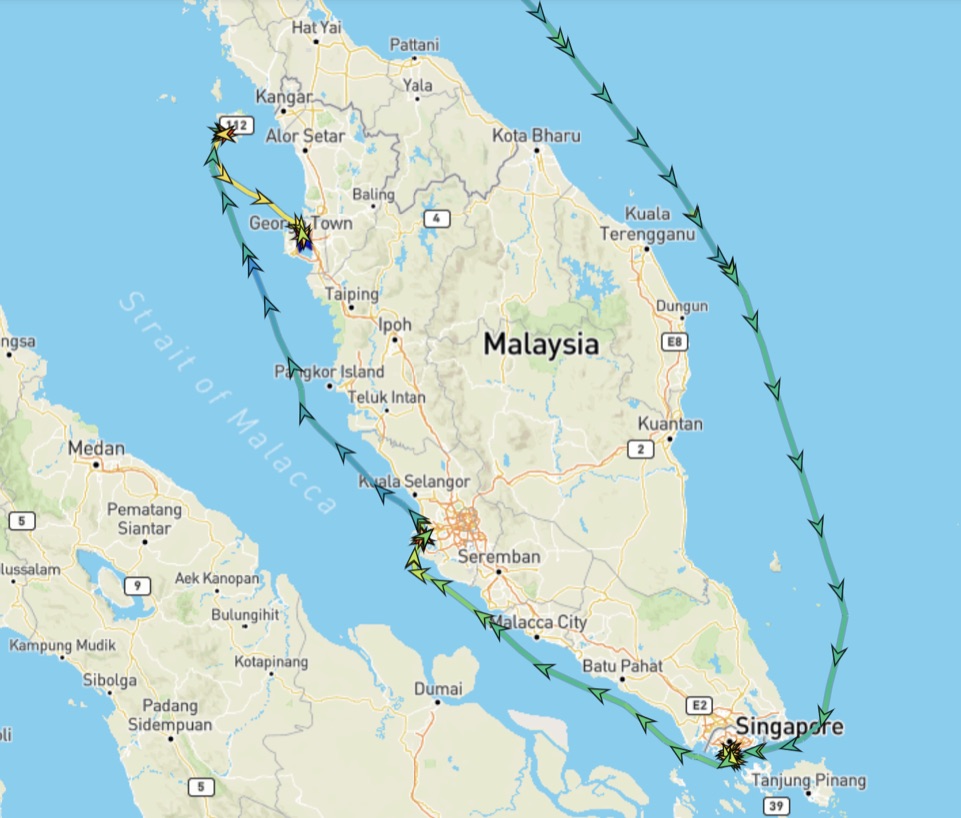
First a warning.
We’re spending a couple of days visiting Buddhist, Hindu, and Chinese Taoist temples.
These are stunning works of architecture and art.
There are lots of photos. Don’t feel you need to view all of them.
I’ve put them into ‘slideshows’ so you can look at a few and move on as you wish.
Now back to our regularly scheduled program.
Here are a few shots from our bus ride to Penang Hill.
Arriving at the base of Penang Hill we left the bus and boarded the funicular for a ride to the top.
At the top we wandered over to the Bellevue (Beautiful View) Hotel. Sadly the cloud cover was lower than the hilltop so we were limited in what we could actually see.
However, we contented ourselves by watching the monkeys (Dusky monkeys – black with white rings of fur around their eyes). Fun fact: only New World monkeys have prehensile tails, all Old World monkeys use their tails only for balance.
We also climbed the few steps to the highest point of the hill to view the Hindu temple perched on the top. Hindus believe “the purpose of life is to seek and realize the divinity within all of us”.
From there it was back to the funicular (where everyone had to wear masks)…
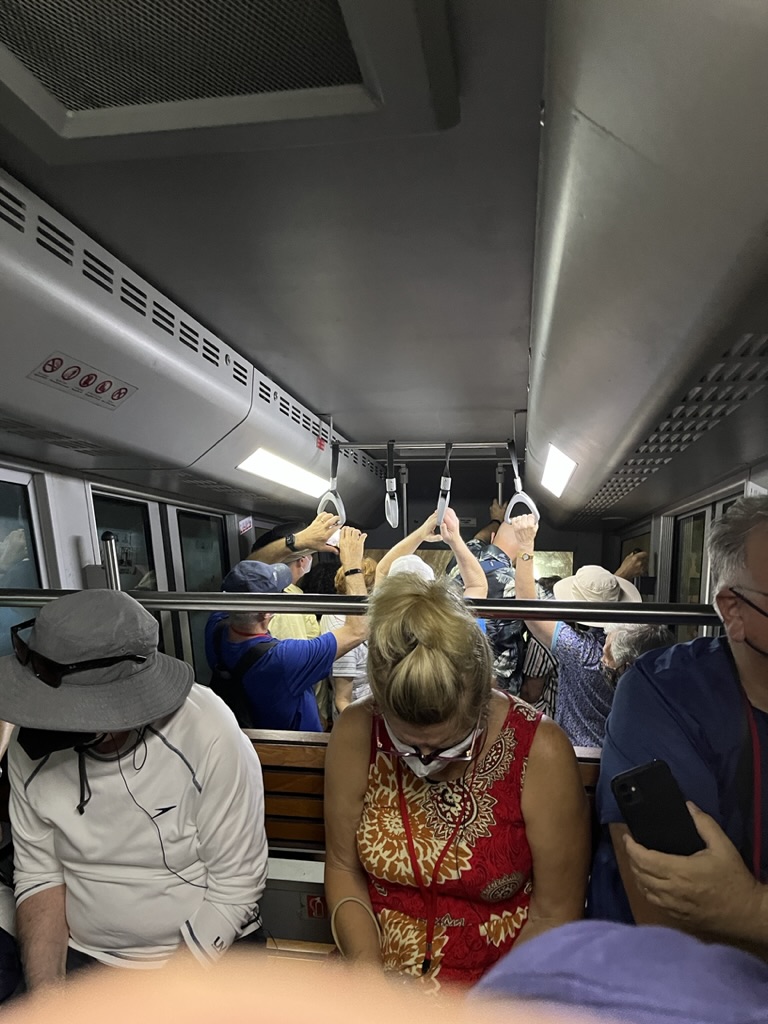
…with a brief stop at the bottom for souvenirs and for Randy to buy a portable fan for Cheryl (I named it “Ganesha” after the Hindu elephant god).
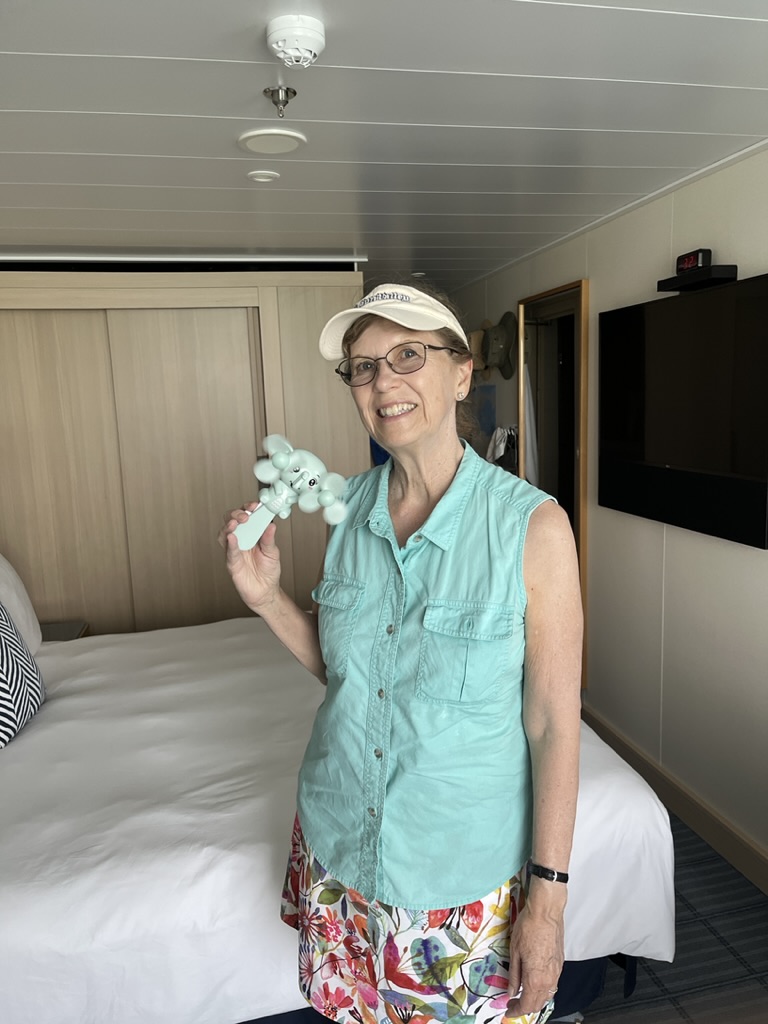
…and back to the bus for a trip across town to a Buddhist temple.
This temple is constructed on a hillside with multiple layers and courtyards.
Our guide took us along a winding path to the top (It even included a short tram ride over one section) and explained what we were seeing in great detail.
Our last stop of the day was a hotel in city center where we were whisked to the 21st floor for a ‘snack’ – more like a full buffet lunch.
You’ve seen enough photos today so I won’t subject you to food.
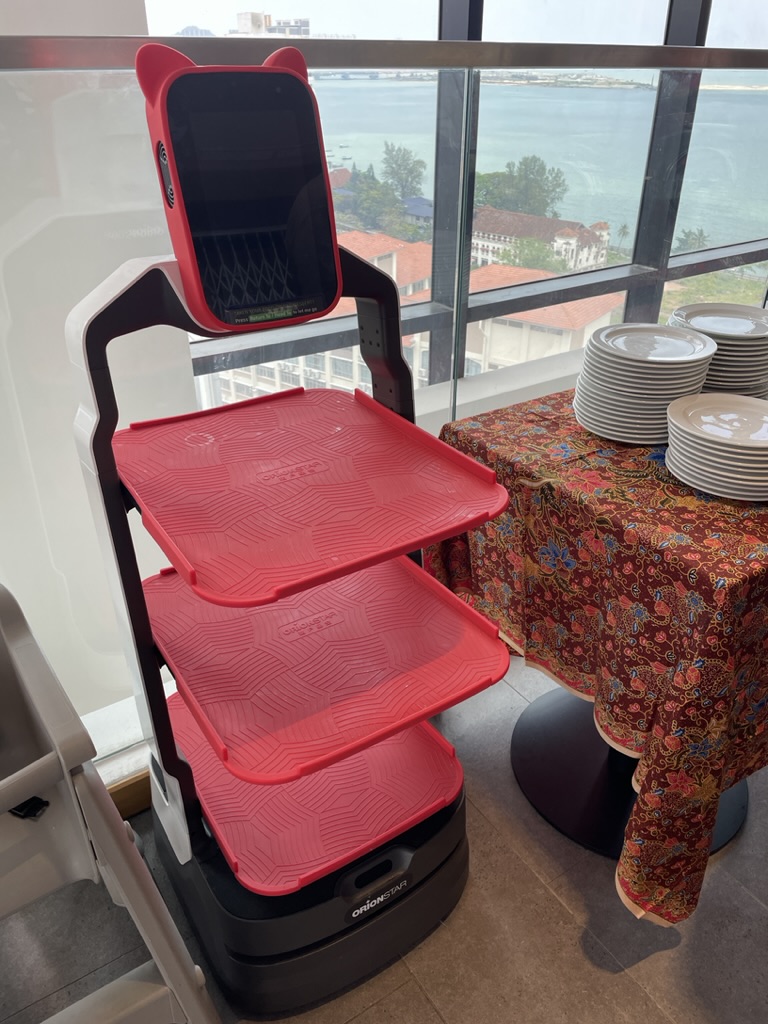
Sadly it wasn’t in use. But we had heard about these and hope to see one in action before we’re done.
Back at the ship we rested and relaxed until the 6:30 lecture: “Anna and the King” – a detailed look at the real Anna and King Mongkut (the book she wrote has been banned in Thailand since 1956). It was fascinating to learn how she invented sensational events to create best-selling novels, how Hollywood picked up the story to spin the movies even further from the truth, and how the story even helped to drive US foreign policy.
Actually the story, as it has been spun, is an indictment of our Western view of indigenous cultures in general. Too often we look at these cultures, measuring them against our industrialized West, and judge them as needing our help to become civilized. When, by most measures, they are highly civilized in their own way.
It was instructive for us to consider as we encounter cultures and life practices that are different from our own.
BBB tonight saw us emerge as the victorious winners with 18 of 22 correct answers!
So resting on our laurels we rested on our laurels.
Nite all, R
Cheryl’s Factoids:
- Penang was 1 of the 3 British trading ports/colonies along the Malacca Strait (which is the shortest route to the Spice Islands). Penang is an island just off the Malaysian peninsula and is just slightly smaller than Singapore. George Town (named after the British king at the time) is the most populous city in Malaysia and Penang is the only “state” where the Chinese are in the majority – now having over 10,000 Tao Buddhist temples. The British colonials wanted to live on the mountain tops where it was cooler and their were fewer insect borne diseases – by 1923 the Malaysians (who hand dug out the rail channel through the jungle and rocky mountainside) completed what became the British Empire’s first funicular railway with machinery and cables imported from Switzerland.
- The swastika (aka “sun cross”) has been used since ancient times by many religions. For the Buddhists, with the arms bent to the left (as opposed to the Nazis who used a swastika with the arms bent to the right), it represents the “auspicious footprints of the Buddha”.
